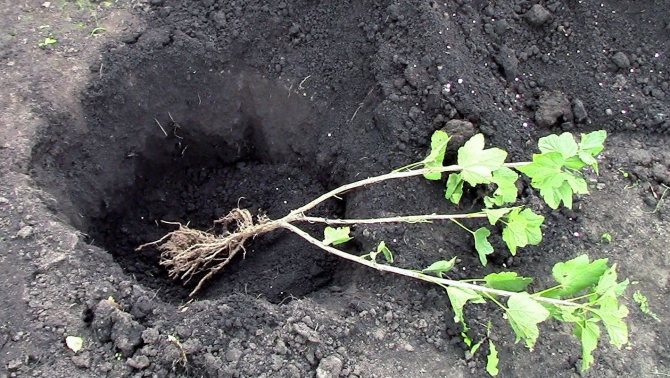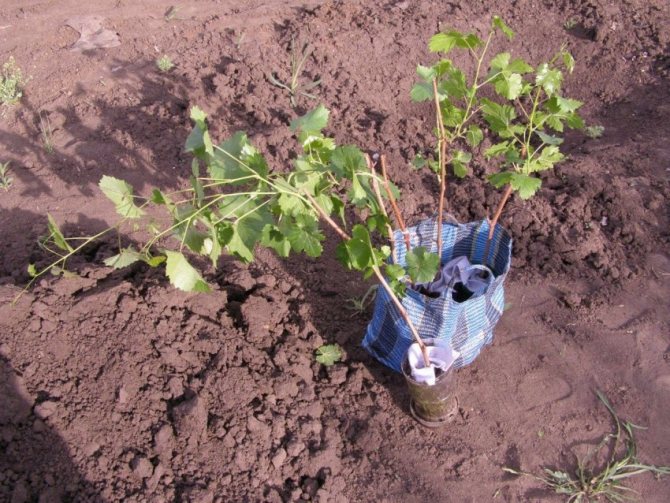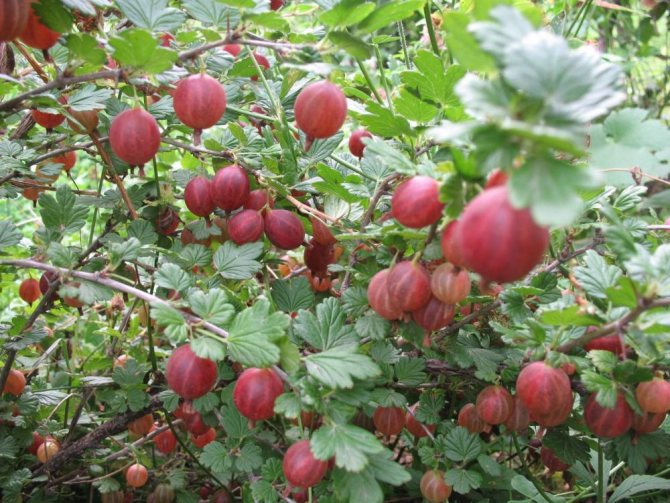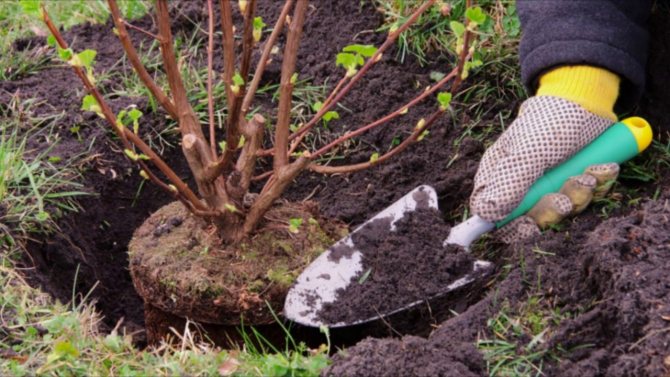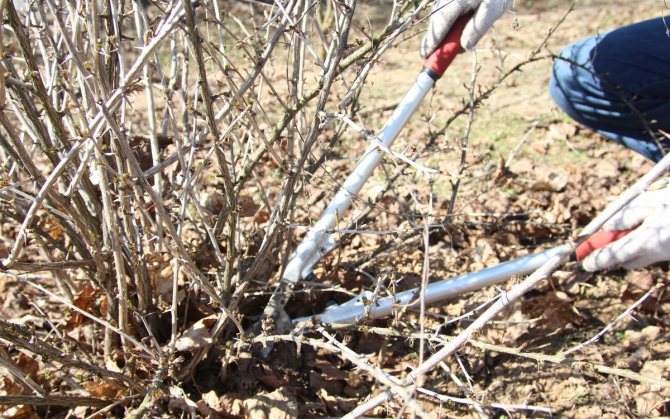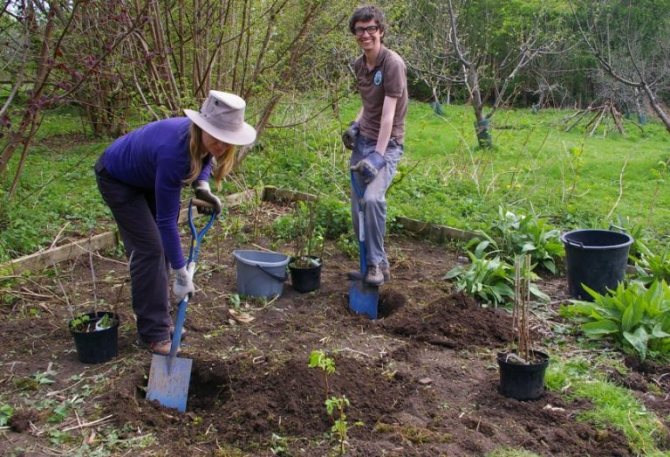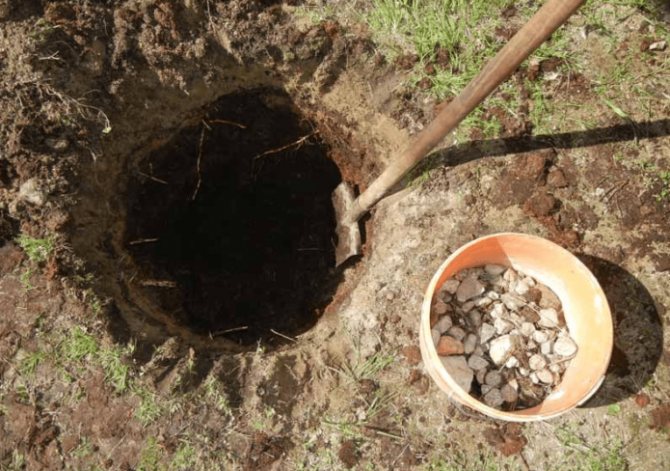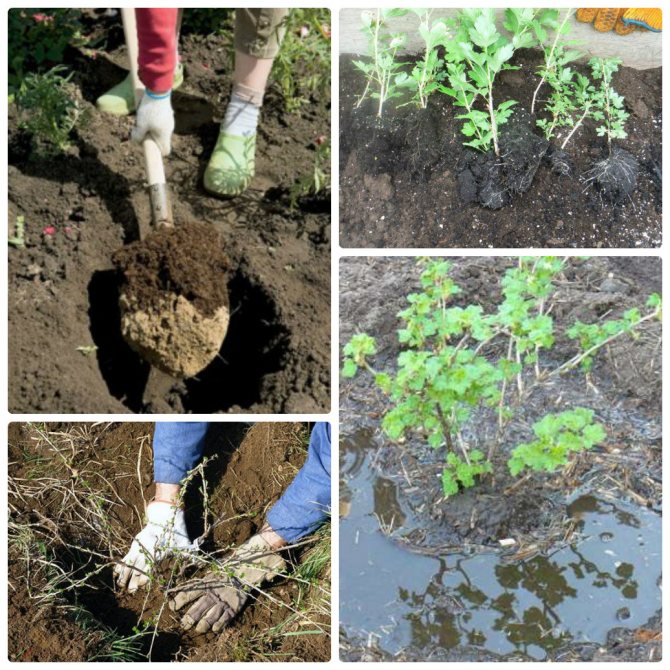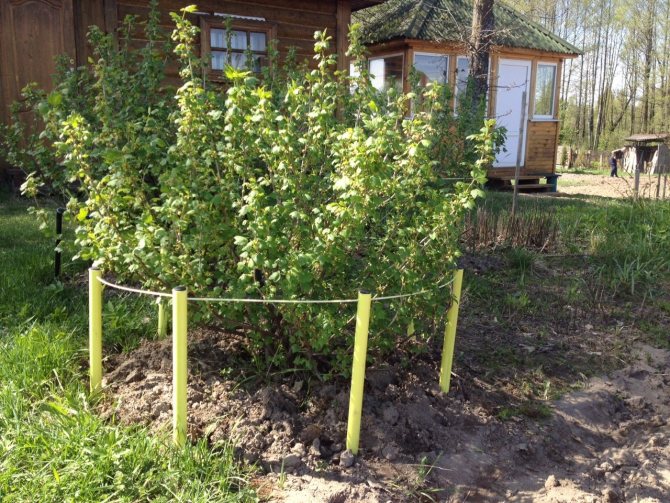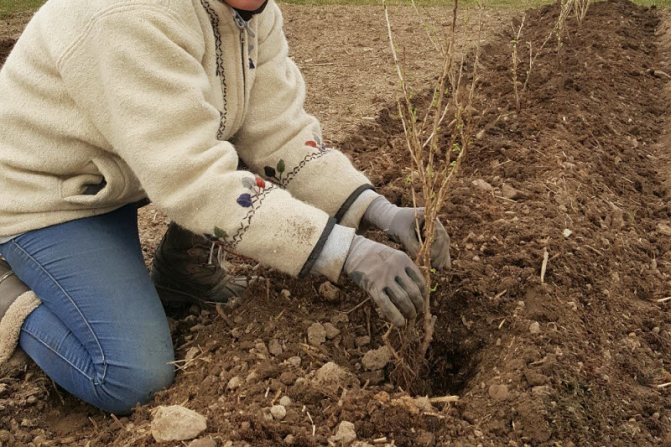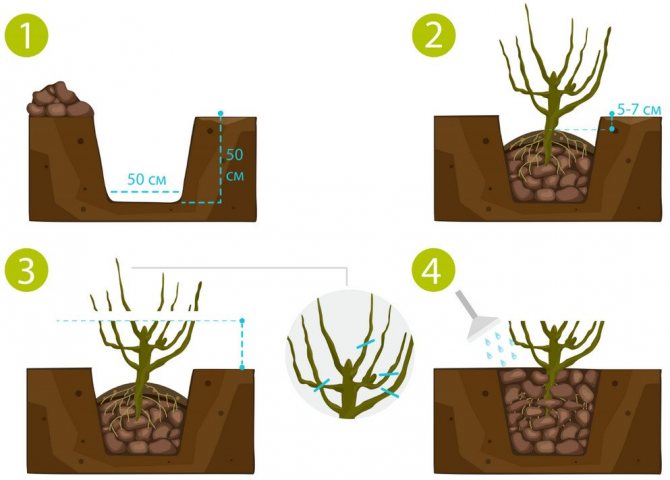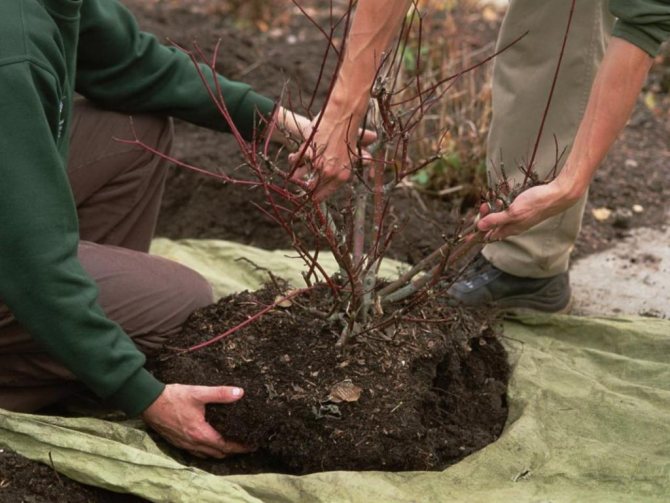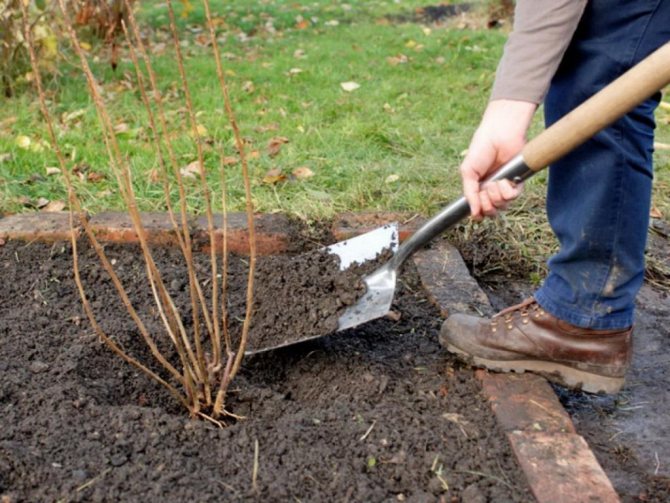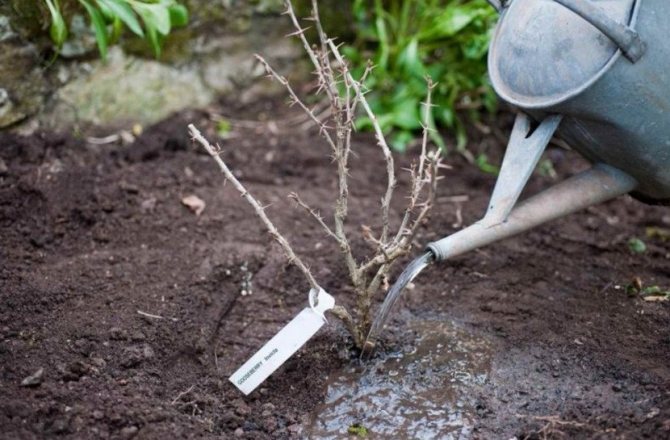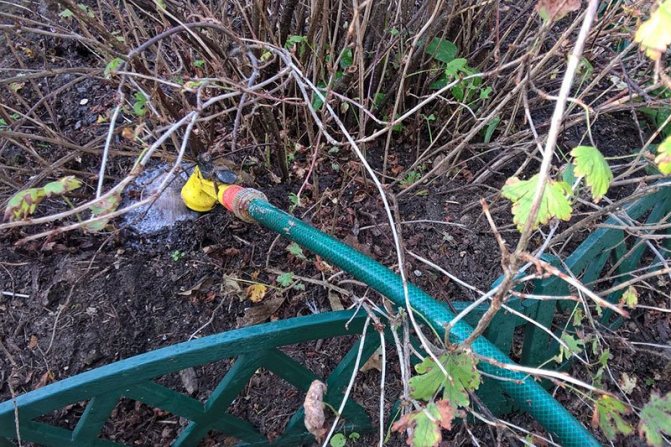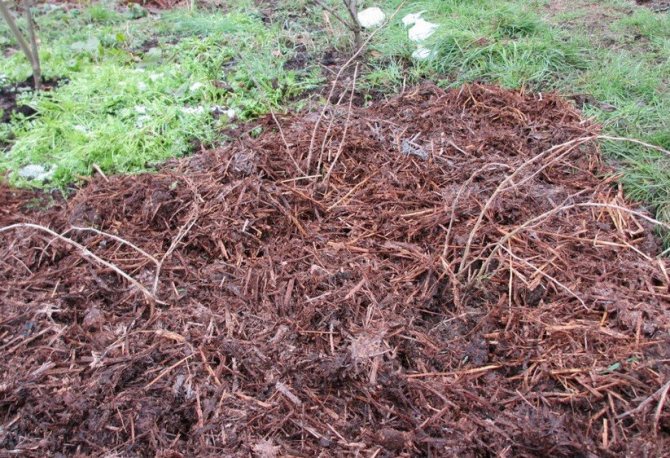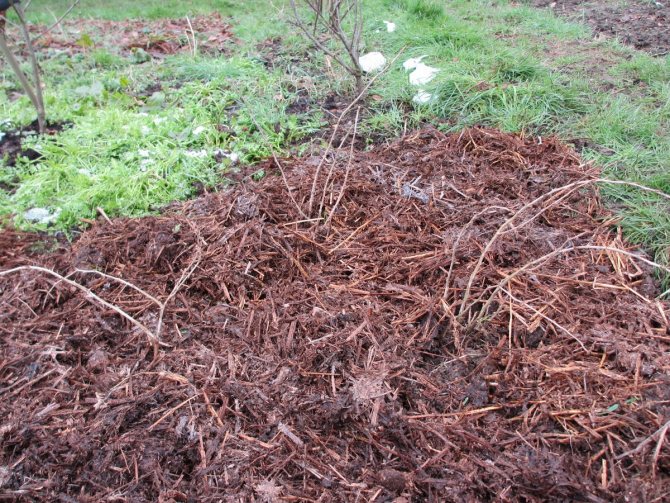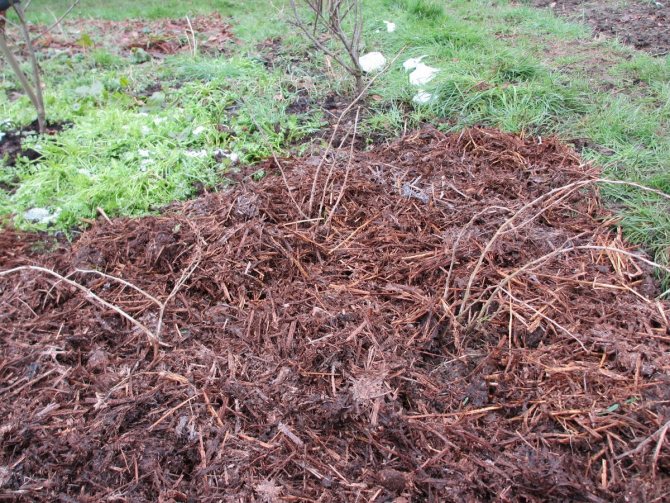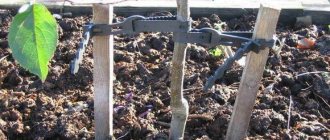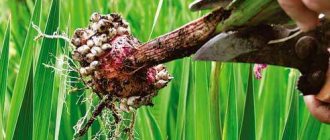Gooseberry is a paradoxical plant, it can give a rich harvest even with minimal care. However, this rule only works if the berry was originally laid correctly. It is worth planting a bush on the wrong day and in the wrong place, and all further efforts of the gardener will gradually come down to zero result. This is the main difference between gooseberries and many other crops, for example, raspberries, which can be reanimated with good nutrition and watering under unfavorable planting conditions.
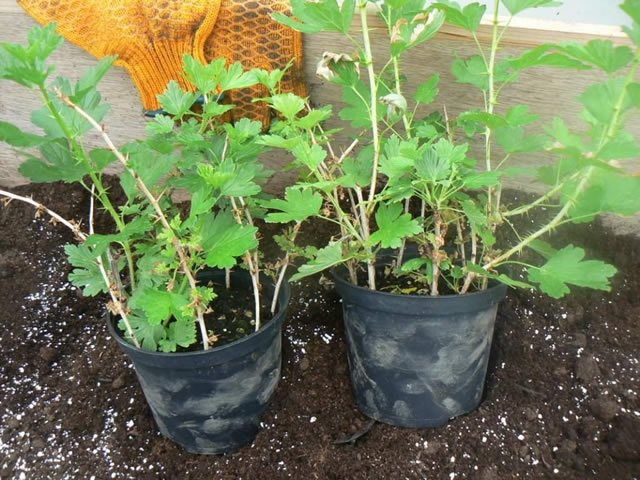
Gooseberry care in autumn: planting, transplanting, pruning, etc.
Gooseberry is a familiar culture on the personal plot. Sweet with a special taste, maybe slightly sour berries everyone likes. One problem is that after harvesting, not all gardeners like to tinker with bushes. Why, they say, do something in the fall, if the work can be successfully postponed to the spring. Of course, but then you will have to forget about a big harvest and healthy plantings. Autumn care, after all, it was not invented for fun, but to restore the gooseberry after the summer season and to prepare it for winter. What do they do in the fall?
The process is not complicated, at the same time it is necessary and, what is pleasant, it is not very time-consuming. Each gardener chooses the time of cleaning the territory depending on how convenient it is for him. Debris from under the bushes can be scooped out either immediately after the leaves fall, but before cutting the gooseberries in the fall, or after clearing the plantings, including trees. Most people like the second option, since tidying and trimming are done at the same time, which significantly saves time. During harvesting, leaves and twigs on the ground are scooped up from all over the garden. If there is one, remove the old mulch from under the bushes. Whoever is engaged in the "production" of organic matter, the leaves are determined on the compost heap. The rest is dried and burned.
According to the general rules, it is customary to plant garden fruit and berry crops in the spring. It is like half a year ahead, bushes or trees will be able to take root well, and it is convenient to look after them during garden work. Gooseberries are an exception in this regard. This is not to say that spring is bad, but in autumn plantings take root much better, maybe because in winter the bushes rest and do not "think" about building up green mass, which is very important for this particular culture. There is one more interesting point. When they talk about planting gooseberries, they mean its reproduction. That is, in addition to seedlings, reproduction is carried out by cuttings plus layering: horizontal, vertical and arcuate. How to propagate gooseberries in different ways is described in previous articles. The best time for autumn planting is the end of September with the transition to the first half of October, but with the expectation that at least 20 days remain before frost.
Moving the bushes to another place is necessary, but it is useful. Necessary, this is when planting is required to be placed more rationally or when the area is freed up for other crops. A useful transfer involves increasing the yield of bushes by moving them to a place with better growth and development conditions. The transplant, as well as planting gooseberries in the fall, is carried out from the end of September to the third decade of October. The choice of a place, preparation, maybe fertilization of the soil, the procedure itself - all this is done in the same way as in spring. But in the fall, if the work was not delayed and the plantings had time to take root, the survival rate of the bushes is one hundred percent.What to do and in what sequence is described in the article on gooseberry breeding.
Since in terms of leaving the crop is more autumnal, but this does not mean that nothing needs to be done in the spring, pre-winter pruning is a necessary thing. According to the general rules, working with bushes after winter is no different from pre-winter activities. Everything is the same, if you do not take into account the nuances associated with the season. How to prune young and old bushes, there has already been an article about this, although it will not hurt to remember the main points. Young bushes are not particularly cleared for the first 3 years, since there is nothing yet, but they form for future large harvests. After 3 years with plantings, they work in full program: they remove dried shoots, affected by diseases, which are very sagging to the side. If you are not sure which branches to delete and which to leave, nothing is touched. In winter all weak shoots will "die out", in spring it will be clear where and what to remove.
Why, it would seem, at the end of the season, when the harvest is harvested, and there is nothing to save, worry about pests and diseases. On the one hand, everything is correct - there are no berries, the foliage has fallen, the harmful animals have quieted down, there is nothing to get sick. But on the other hand, the autumn processing of the garden is a necessary prophylaxis for the future. Some fungi "go" into hibernation for the winter, but remain to live. Pests, together with their offspring, hide in the upper layers of the soil until spring. So that with the arrival of spring the currants do not begin to "eat" those and others, plantings in the fall must be processed.
- Copper or iron vitriol (3%), as an option - oxychloride, to choose from - helps to get rid of the remaining fungi.
- Baking soda (5%) neutralizes powdery mildew fungus.
- Karbofos will poison the hidden pests.
Some gardeners in the fall suggest using folk remedies. You can try, but without obvious manifestations on the bushes of the same diseases, the effect of such drugs is very weak. Planting, including the soil, is sprayed immediately after the foliage falls and the garden is cleaned. There are few drugs, but enough for prevention. The main processing of the gooseberries will begin in the spring. There is a separate article about what and how to do with the onset of the new season.
In the fall, when there are no berries or leaves on the bushes, around October, there is at least a little fertilizer, but you need to make it. Fertilized plantings freeze less in winter, and begin to develop more intensively in spring. But it should be borne in mind that autumn dressings in terms of the amount of introduced substances are purely symbolic, more intended for maintaining plants, and not for growth and development. Recommended for an adult bush: - humus (1 kg) or compost (2 times more); - potassium sulfate and superphosphate (1 tbsp. L.); - ash (1 l).
When transplanting or planting gooseberries in the fall, add 1 tbsp for better rooting. l. urea. Moreover, if adult plants are fed at will, then newly planted ones are mandatory. Organics and minerals are introduced into 2 separate circular pits 10 centimeters deep, dug along the diameter of the bush. If you combine top dressing with watering, it will be very good. Fertilizers for the winter will "lay" near the very roots, and with the arrival of spring heat they will immediately begin to "work".
Water under the gooseberry is brought in after harvesting, pruning and feeding, unless, of course, the fertilization of the bushes and watering were combined. At the same time, water is needed for plantings before winter, but not always. If autumn is rainy and the ground is not just wet, but wet, watering is even harmful. If September and October are without precipitation, the soil will have to be moistened, this will prevent the root system from freezing. The water-charging watering lasts a week. As soon as autumn begins to lose ground, approximately mid-late October, 4-5 buckets of water are poured under the gooseberry every 3 times every 2 days. Maybe a little more or less, until the ground gets wet to a depth of 50 centimeters.The next day after watering, the soil is slightly fluffed again and covered with mulch.
Loosening and mulching the soil
Putting things in order around the bushes does not mean removing leaves and other garden debris. The concept of preparing the garden for winter includes: loosening the land around the plantings, removing weeds, laying mulch. The earth is dug up to give the roots a portion of oxygen, which means to strengthen them before wintering. Plus, the pests raised from the depths and hibernating will not have time to crawl back and will die during the first frosts. The remaining weed is picked in the fall, thereby preventing its further spreading through the garden, and in the spring there will be less work. Mulch in the form of peat, sawdust, dry grass, on the one hand, retains moisture. On the other hand, it insulates the root system. Ideally, mulching should be done just before freezing temperatures. It will not be possible to get into the frozen "pillow" of the pests remaining on the surface. A mulch thickness of 10 centimeters is considered sufficient for wintering bushes in comfortable conditions.
Is it necessary to insulate gooseberries for the winter, is it not necessary, as if no one decided. Some gardeners are sure that even in cold climates, frosts do not harm the bushes. The plantings do not like cold winds, therefore it is advised not to insulate the gooseberries, but to protect them from the wind, for example, with wooden shields. You won't have to fool around with the insulation, and the snow collected inside the fence will be enough for the safe wintering of the bush. At the same time, other gardeners, with the arrival of frost, tie the branches, wrap them in burlap, bend them down as far as possible and cover them with earth. Which method is better, so far no one has compared, everyone is sure that they are right. But for the sake of interest and the benefit of the case in one of the seasons, you can try each of the methods yourself. And once again about clearing the bushes. Before pruning gooseberries in the fall, it would be nice to know whether the winter will be cold or warm. If it is frosty, and the plantings are still young, it makes sense to play it safe and still cover the gooseberries.
No more obligatory crop care activities are foreseen in the fall. Whether to do the above is a difficult question for some. In principle, it is not even obligatory, but if at the end of the season you want to see a large number of berries on the bushes, you will have to take care of the gooseberries.
Share useful information:
Video "Autumn gooseberry transplant"
This video will show you how to properly transplant a gooseberry in the fall.


Autumn is the most optimal time of the year when it is best to transplant gooseberries. The season has already ended, the berries have been collected from the bushes, which means that after transplanting to a new place, the bush will direct all its forces to rooting and take root better.
Choosing a suitable place for a gooseberry transplant
Not everyone is able to initially plan the location of the beds, shrubs, trees and flower beds on the site in such a way that they do not have to regret their decision later. The reasons why there is a need to redevelop the site may be different: someone has an idea to create a Moorish lawn in front of the house, others are uncomfortable with overgrown trees and shrubs, and still others are trying to save weakened plants that were planted in an inappropriate place for them. ... And if adult fruit trees in most cases have to be cut down at the root, then with shrubs the situation is much simpler - so, transplanting gooseberries in the fall does not require much trouble from the gardener and does not take much time.
As you know, gooseberries grow and bear fruit best of all, which are planted in places open to the sun, protected from strong winds. In damp areas, where groundwater is too close, and in areas with heavy clay soil, the shrub will often be subject to fungal diseases, and the berries, if they appear, are very small.
Gooseberry transplant video
To get a good harvest from gooseberries:
- choose areas with light loamy soils, sandy loam soil can be diluted with clay, and sand can be added to clayey;
- since gooseberries do not favor acidified soil, if necessary, add lime to it just before planting the bushes;
- after raspberries and currants, it is better not to plant gooseberries, since after them the soil is depleted, and the pests of these crops are common - they will gladly pounce on weakened gooseberry bushes;
- stick to the most appropriate dates when you can transplant gooseberries;
- remember to weed the soil thoroughly before replanting the bushes.
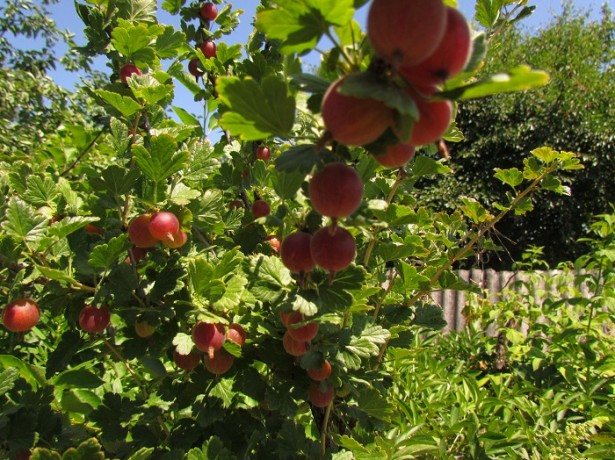

Gooseberries, which are planted in places open to the sun, grow and bear fruit best of all.
If you needed a gooseberry transplant in order to free up space on the site, then you can place the bushes along the fence, at a distance of one and a half meters from it, or near young trees, leaving a free distance of at least two meters.
Step-by-step instructions on how to properly transplant gooseberries
Although each gardener has his own opinion about when it is more convenient and more effective to transplant gooseberries, transplanting is undesirable in the spring because this thorny shrub blooms very early. You can easily skip the appropriate dates for transplanting gooseberries, and after the buds appear on the branches, it is highly undesirable to damage the root system of the bush.
In autumn, in September-October, you will have time to cut the gooseberries, removing all the old thorny branches and leaving only the youngest, strongest shoots (they will need to be shortened by a third), making it much easier to work with the bush.


In the fall, in September-October, you will have time to cut the gooseberries by removing all the old thorny branches.
Gooseberry bushes are transplanted as follows:
- the cut gooseberry is dug in from all sides at a distance of at least 30 cm from the base of the bush, all thick roots are chopped off with an ax;
- then the bush is removed from the ground with a shovel or crowbar, put on film and transported to the transplantation site;
- a hole is dug in the selected area of a slightly larger diameter than an earthen lump with a root system (about 50 cm deep);
- 4 buckets of water are poured into the pit;
- a mixture is poured from the top layer of the removed fertile soil with compost (it is better not to add fertilizers so as not to burn the roots);
- the gooseberry bush is installed in the pit and the gaps on the sides are filled with the remaining fertile mixture;
- the soil around the bush is compacted and watered with three buckets of water;
- dry earth and peat chips are poured on top as mulch.
Video about caring for gooseberries
The transplanted gooseberry should be buried five centimeters deeper into the ground than it used to grow. Before the onset of cold weather, the bush will need to be watered regularly, pushing the mulch back and returning it to its place. For the winter, it will be enough to cover the near-trunk circle with sawdust, there is no need to cover the bush.
A gooseberry transplant in the fall can be used not only to free up an area for a lawn or to transfer a bush to a more comfortable place. This information will also be useful to those who are interested in how to plant gooseberries in order to reproduce them. Autumn transplantation provides excellent survival rate of shrubs, so you can safely propagate gooseberries not only by layering, but also by dividing the bush.
Rate the article:
(4 votes, average: 5 out of 5)
Autumn is the time when it is recommended to plant shrubs and trees, as they manage to take root thoroughly during the winter and, as a result, provide adequate nutrition for the aboveground part. It is also possible and even necessary to plant gooseberries in the fall, since gardeners have more free time, and there is an opportunity to think about everything in the layout of the site.
In this article you will find answers to the questions: how to plant gooseberries correctly in autumn, when is it better to plant a plant.
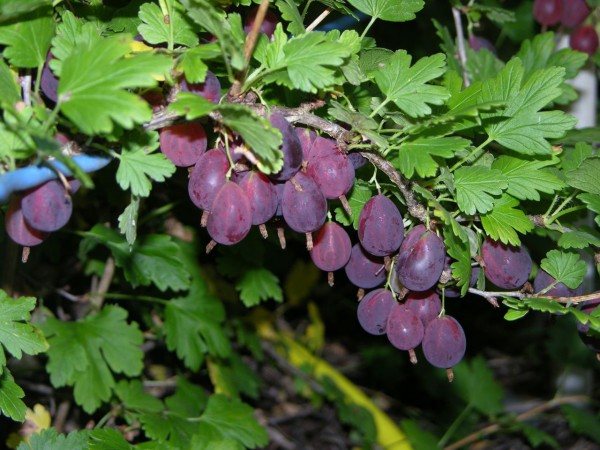

Gooseberries in the fall: planting and care, pruning and transplanting
Anyone who is going to grow gooseberries in the garden will have to solve several important questions at once: which varieties of gooseberries to prefer, in what place to allocate a site for a shrub, when to plant gooseberries - in spring or autumn, and for those who intend to plant in autumn, relevant the question will be how to care for the gooseberries in the fall after planting. You need to take these tasks responsibly, because in one place, with good care, a gooseberry bush can grow and bear fruit for up to 40 years, bringing up to 10 kg of berries annually.
The main mistakes when transplanting
Sometimes inexperience and mistakes can lead to illness or death of the bush. Common mistakes when transferring a bush:
- Transplanting an adult bush like a seedling. Keeping an earthy coma during transplanting greatly increases the chances of a plant.
- Neglect of rooting agents. At the moment, preparations have been developed that help the plant to strengthen the root part.
- Use of cold water. Gooseberry is a thermophilic plant. For irrigation, a liquid with a temperature of at least +18 ° C is used. Cold water, especially on hot days, is detrimental to the plant. Large changes in temperature will negatively affect the culture.
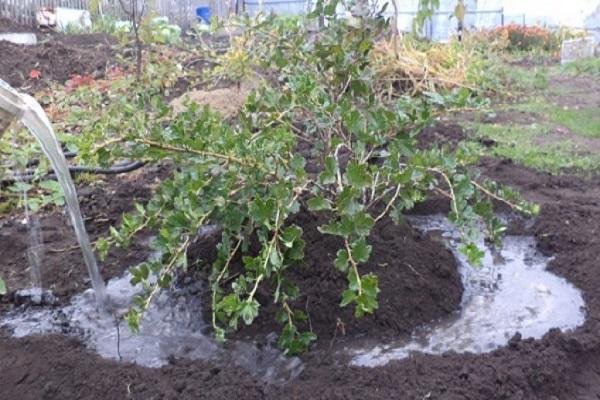

When to plant gooseberries in autumn
Planting dates for gooseberries in autumn
It is generally accepted to plant plants in the spring. Gooseberries, like currants, are planted early - before early April. But if in your area there is a long and warm autumn, then do not postpone planting until spring, plant a gooseberry in the fall - before the cold weather begins, your seedling will have time to take root and get stronger, and with the arrival of spring it will begin to develop rapidly. And the growth of overgrown roots occurs faster at low temperatures. In what month should gooseberries be planted in autumn? It is best to do this from mid-October to the end of November, but the exact timing depends on the climate of the region.
When to plant gooseberries in the regions
For example, in the northern and central regions of Ukraine, the best time for planting is the beginning of October, and in the south of Ukraine, in the Crimea and in the Stavropol Territory, planting is carried out from mid-October until the end of November. In the non-chernozem zone of Russia, planting begins in the second half of September and ends by October - just three weeks before the onset of frost. In Siberia, they begin to plant gooseberries a little earlier - from the beginning of September.
Choosing a place and preparing the ground
Choosing the right place for planting gooseberries is often the key to successful growth and fruiting of the plant. The bushes grow well in sunny, sheltered areas with good soil drainage. If the water stagnates next to the holes, then the dampness that occurs naturally contributes to the development of fungal microflora and frequent diseases of the bush.
A site with light, loamy soil is suitable, it is possible to dilute the suspended soil with clay. It is imperative to deoxidize the soil, for this you need to add dolomite flour or lime on the eve of planting.
It is advisable that currants or raspberries do not grow in the chosen place before, since they deplete the soil during growth. In addition, the observance of crop rotation will save the plant, weakened by the "relocation", from diseases common to these crops.
Immediately before transplanting, it is necessary to carefully dig up the area, and also remove all weeds.
Planting gooseberries in the fall in the ground
Preparing gooseberries for planting
For gooseberry breeding, choose seedlings one or two years old - they adapt much faster and easier than three to four years old. The seedlings should have at least three skeletal roots about 15 cm long with yellow bark, the fibrous roots should also be well developed, and the ground part should be one or two shoots up to 40 cm high.Before planting, you need to remove all the leaves from the seedling, carefully running along the shoots from the bottom up with a loosely closed gloved hand. Then you should cut off damaged or dry roots, and then lower the roots into a clay mash with the addition of a root formation stimulator. They make a chatterbox for 15-20 seedlings according to this recipe: 1 kg of black soil and 1 kg of clay, 1-2 sachets of Kornevin, 6 g of Aktara are diluted with three liters of water and mixed thoroughly.


Then plant the gooseberries
In a small summer cottage, gooseberries are usually planted along a fence or between fruit trees, but the latter option is not the best - the roots of the trees dry out the soil. The best precursors for gooseberries are row crops - early potatoes, beets, peas, beans, as well as lupine and clover as siderates. After currants and raspberries, gooseberries cannot be grown. Do not plant gooseberries next to currants because they have common diseases and pests.
Gooseberry soil
Gooseberries need more elevated and lighted places than currants. He loves slightly acidic or neutral (pH about 6), humus-rich, air-permeable chernozems and loams, in which groundwater is located no higher than at a depth of 1.5 m. Soils that are not cleared of weed roots, in particular, wheatgrass, gooseberries are not fit.
Site selection and preparation, taking into account humidity and lighting
When it comes to replanting, the gooseberry prefers open and sunny areas, protected from strong winds and drafts. It is better to find a place where the plant will be well illuminated by the morning sun. In the afternoon, the gooseberry tolerates partial shade and prefers a cool, humid growing area. Northern slopes protected from direct sunlight are the best option. Planting along the side of a building, fence, or shady pergola is also suitable.


The neighborhood of gooseberries with currants and raspberries will not be the best, since they have identical diseases and pests. But in place of legumes and beets, you can safely transplant this plant.
Important! Tools that will be used to transplant a plant must be treated with a disinfectant solution.
Places with poor air circulation should be avoided - this can increase the incidence of diseases such as powdery mildew. Light sandy soils are also not suitable for transplanting gooseberries. The soil should be fertile, well-drained, with high moisture capacity.
If the soil in the place that was chosen for transplantation is poor in nutrients, does not retain moisture well or contains a lot of sand, then it needs to be fed with organic substances:
- compost;
- manure;
- chopped autumn leaves;
- peat - especially if the soil is sandy.
The optimum soil pH for gooseberries should be around 6.5.


How to plant gooseberries in autumn
How to plant gooseberries in the fall
Two weeks before planting, dig up the area under the gooseberries to the depth of a shovel bayonet, carefully picking out the roots of the weeds with your hands. Dig holes for the seedlings about 40x40x40 cm in size, trying not to mix the upper fertile soil layer with the lower infertile one. Fill the wells two-thirds with a soil mixture consisting of topsoil and compost, adding to each plant 200 g of superphosphate and 60 g of potassium sulfate or 300 g of wood ash. Put a third of the fertile soil in a mound in the center of the hole and leave until planting to allow the soil to settle. How to plant gooseberries in autumn? In general, the autumn planting order is no different from the spring planting. Pour half a bucket of water into each hole, dip the roots of the seedling in a chatter box, then place it on a mound and cover it first with the remnants of fertile soil, and then, if it is not enough, complete the soil filling from the lower layer.As a result, the root collar of the seedling should be underground at a depth of 4-5 cm. Compact the surface around the bush and water abundantly. Mulch the trunk circle with dry earth, humus or peat.
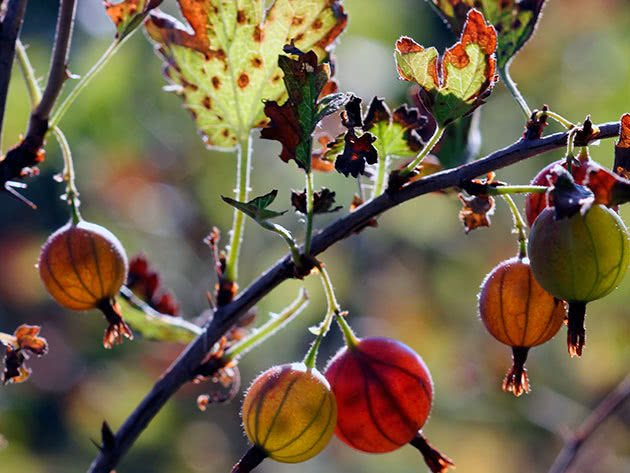

With the bush method of planting gooseberries, the distance between the seedlings is left at least 2.5 m, and the bushes are planted both along the line and in a checkerboard pattern.
How to choose a place and prepare the soil for planting
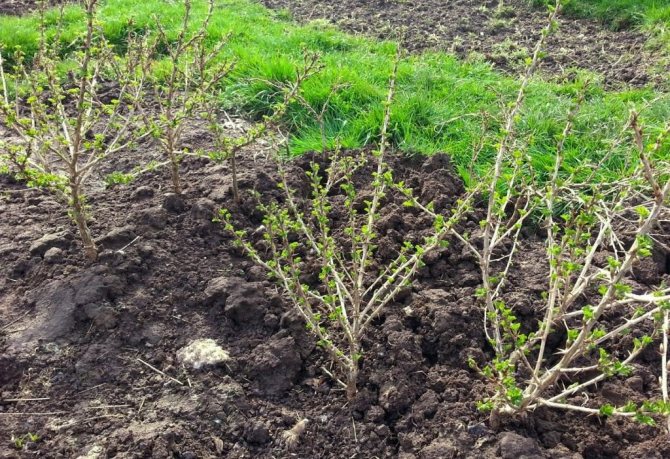

Gooseberries are picky about high-quality lighting, so areas with sufficient sunlight are chosen for it. In the shade, the bush begins to ache, yield decreases and the formation of new shoots slows down. But overexposure to the sun is detrimental to gooseberries. It is advisable to position it so that tall buildings or trees protect it from midday.
The site for the culture should be located on a small hill: when planting in a lowland, the roots will suffer from waterlogging and begin to rot. The best crop precursors are potatoes, clover or legumes. The bush feels good next to fruit trees: pear, plum, apple.
Placing currants, raspberries or strawberries in the neighborhood will negatively affect the development of gooseberries. Under the walnut, the bush will gradually wither away.
According to the composition of the soil, the gooseberry prefers light loams with low acidity. When planting, the soil is fertilized with humus and mineral fertilizers. Sand is added to heavy soils - 1-2 buckets per sq. m. Dig the site 2-3 weeks before the planned planting. In each hole, soil is laid, mixed with a bucket of humus and 500 g of complex fertilizers.
Transplanting gooseberries to a new place in the fall
When to transplant gooseberries in the fall
Sometimes, at a summer cottage or in a garden, you have to do redevelopment - cut down trees and replant bushes, and it is better to do this in spring or autumn. The timing of transplanting gooseberries practically coincides with the timing of its primary planting: in spring it is March, and in autumn it is September or October. How to transplant gooseberries in the fall? After you have chosen a suitable place for it and prepared the soil, cut off old and unnecessary branches on the bush, leaving no more than seven young, healthy and strong shoots, which are shortened by one third before digging. Then the bush is dug around the perimeter of the crown projection, chopping off thick roots if necessary. With the help of a crowbar and a shovel, the bush is removed from the soil and placed on an oilcloth or a piece of polyethylene, transferred to a new place and planted in a hole prepared in advance by the method described by us. The roots can not be processed with a chatterbox, but it is advisable to pour 2-4 buckets of water into the hole before planting (the amount depends on the age and size of the bush). Set the bush on a mound in the earthen slurry and fill the voids with soil, crushing it tightly. After planting, water the bush again, and when the water is absorbed, mulch the trunk circle.
How to choose planting material
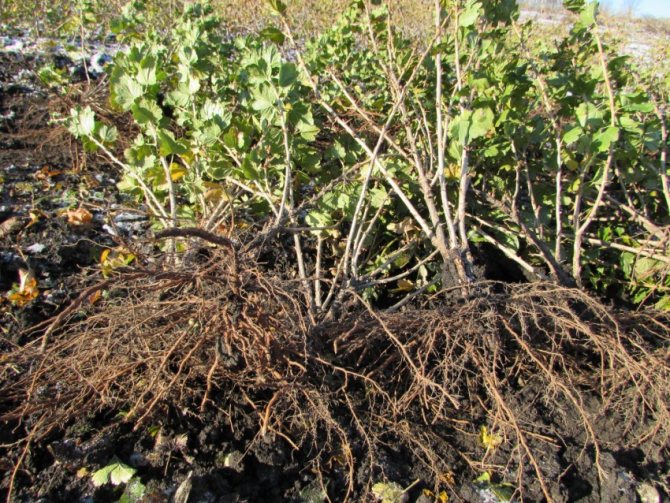

The best gooseberry seedlings are plants no older than 2 years old: older specimens do not take root well in a new place. When choosing, you should pay attention to the following indicators:
- Aboveground part - 3-4 well developed, not less than 1 cm in diameter of a shoot 22-30 cm high.
- Root system - at least 3 roots 15 cm long, yellowish, with no signs of damage or decay. For seedlings in containers, the roots should be visible from the drainage hole; there should be no whitish coating on the soil surface.
- The bark of the stems is gray-brown, without cracks.
Pruning gooseberries in the fall
How to properly prune gooseberries in the fall
Formative and sanitary pruning of gooseberries is carried out in the spring, after wintering, but Should gooseberries be cut in the fall? On our site there is a voluminous article on the care of gooseberries, which describes in detail the pruning of gooseberries in the fall for novice gardeners. But we are ready to briefly remind you how to cut gooseberries in the fall.Young bushes planted in the ground in October should be cut off immediately after planting, leaving no more than 5 cm of shoots above the surface. Adult bushes are shortened by a third before the autumn transplant. In general, pruning gooseberry bushes in the fall includes sanitizing plants from unnecessary branches and rejuvenating pruning. The scheme for pruning gooseberries in autumn is as follows: diseased, damaged, competing and thickening branches are removed completely, like young green shoots that are unlikely to survive the winter; old black branches must also be removed, but if the bush consists almost entirely of such branches, it is impossible to cut them all at the same time - no more than a third can be removed in one year. Slices thicker than 7 mm must be treated with garden varnish.
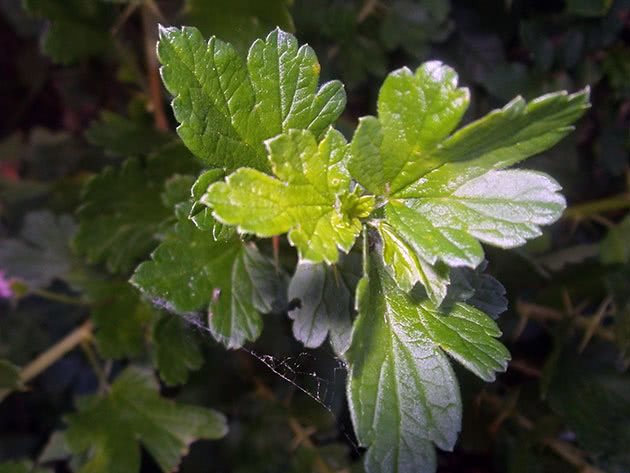

By doing sanitary pruning in the fall, you free the plant from having to feed unnecessary branches in the winter.
Plant preparation for transplanting
The gooseberry itself does not need a transplant - it is carried out only if the owners want to transfer the plant to another place. Sometimes they have a desire to transplant the plant for decorative purposes, and sometimes - as needed, in order to improve the yield. Often, specimens that are 3-5 years old are chosen for transplantation. The older the plant, the more difficult it will be to replant due to the overgrown root system.
Read about planting gooseberries outdoors.
The first step is to thoroughly prune the bush chosen for transplantation - this will greatly facilitate further manipulations with the plant. It must be remembered that new shoots originate from the underground part, therefore, older, weaker shoots should be removed, cutting them off at the soil line.


Correct pruning will allow the rooted gooseberry bushes to fill with energy in the spring for good fruiting, improve the penetration of sunlight and maintain good air circulation, and minimize the risks of plant disease.
Gooseberry care in autumn
Gooseberry processing in autumn
How to care for gooseberries in the fall? At this time of the year, the plant needs watering, weeding and loosening of the soil in the near-stem circle. Gooseberry bushes in the fall need to be treated for diseases and pests and prepared for winter. Autumn processing of gooseberries is of particular importance, since it determines how the plant will survive the winter and whether it will yield a good harvest next year. But before you process the gooseberries in the fall from pests or diseases, you need to carefully collect the fallen leaves and old mulch, remove all the debris, weed the weeds, dig up the soil on the site and create a soil cushion around the bushes to protect against pests and diseases in the crown radius. How to treat gooseberry bushes in the fall? To protect plants from fungal diseases, dilute 50 g of copper oxychloride in 10 liters of water or apply one to three percent Bordeaux liquid for spraying. Some gardeners prefer to treat the garden with 3% iron sulfate. For pests (aphids, sawflies, moths), gooseberries are treated with a solution of 20 g of Karbofos in 10 liters of water.
Watering gooseberries in autumn
In the fall, water-charging watering of gooseberries is carried out, for which a hollow 15 cm deep is dug around each bush around the crown perimeter, into which water heated in the sun is poured - from 10 to 30 liters per plant, depending on its age and size. If the autumn is rainy, you will not need to water it in the winter.


How to feed gooseberries in autumn
Top dressing of gooseberries in the fall is carried out while digging the soil under the bushes. It includes 20 g of potash and 30 g of phosphorus fertilizers per plant.
Gooseberry mulching
The gooseberry root circle is covered with mulch in the spring or immediately after planting. But in preparation for winter, the mulching material that has served its time is removed, and before the onset of frost, peat or humus is placed under each bush in a layer of 10 cm - organic gooseberry fertilizer, which, in addition to nutrition, will provide the roots with protection from frost.
Transplant technology
The first step is to properly prepare the gooseberry for transplantation. Prune old branches so that the bush does not waste resources on them. Only young shoots should remain. It is advisable to shorten them by a third, so that the plant can more easily transfer the transplant.
Once the bush is ready, measure 30 centimeters in all directions and dig in the ground to expose the roots of the bush. Found thick roots must be chopped, try to leave small roots intact. After that, you need to pull out the bush and transfer it to film, trying not to break the roots anymore. You can remove it from the ground using a shovel, pitchfork or crowbar.
In a new habitat, it is necessary to dig a hole in width the same as the span of the roots of the bush, in depth it should be at least 50 centimeters. Pour 4 buckets of water into the pit, then pour a layer of fertile soil with compost (it is better not to add other fertilizers so as not to damage the root system). The bush should be placed in the center of the pit, carefully covered with earth and tamped down so that it remains stable. Then you need to water the soil again, with at least 3 buckets of water, and mulch with peat or dry soil.
Transplanting is only half the battle. For the plant to take root, it is important to provide it with good care.
Before the first frost, you need to water the bush every few days, removing the layer of mulch, and then returning it to its place. As a preparation for winter, you can cover the trunk circle with sawdust.
How to plant gooseberries in the fall
Gooseberry is a rather unpretentious shrub with a high yield - it bears fruit for up to 12 years. In almost every summer cottage, you can find 2-3 bushes. Today we will tell you how to properly plant gooseberries in the fall.
There are approximately 160 varieties, which can be divided into several groups:
- European varieties (Triumfalny, White Triumph, English Yellow, Date) are distinguished by large berries. But when growing bushes, low frost resistance must be taken into account;
- American varieties are characterized by high drought and frost resistance, weak thorniness of branches. They are inferior to European varieties in berry size and taste;
- hybrid varieties are the result of the work of breeders. The bushes have the best qualities of European and American varieties.
When choosing varieties, other plant characteristics are also taken into account: the height of the branches (undersized, medium-sized and tall), the shape of the bush (spreading, compact, erect).
Step-by-step instructions for transplanting
It is better to transplant gooseberry bushes during their dormant period. There is no significant difference in agricultural practices between autumn and spring plantings. However, when transplanting in the fall, the bush can give a crop the next year. Consider 2 ways to transplant bushes: single and mass.
Transplanting a single bush
Pit preparation
The first step is to prepare a hole in which the bush will be planted. Its depth should be about 50 cm, and its diameter should be twice the estimated diameter of the roots. If there is frequent stagnation of water on the site, it will not be superfluous to equip drainage in the pit.
To do this, a mixture of crushed stone, broken brick and sand is poured into the bottom of the pit. A layer of agrofibre is laid on top of this mixture, on which fertile soil is poured, mixing it with humus or compost. If drainage is not needed, fertile soil is poured directly to the bottom of the pit.
Advice: it is better not to put mineral fertilizers into the pit, as this can lead to burns of the roots. But ash can be brought in without fear.
Preparing and digging a bush
It is necessary to cut the bush in order to bring its aboveground and underground parts into conformity. Old, damaged, broken branches are cut, and all healthy shoots are shortened.
In this form, the bush will take root faster and better. If the bush is young, then its entire one-year growth is cut off to 8 buds. On adult bushes, the annual growth is cut in half.
The order of digging and carrying the bush:
- Having retreated from the center of the bush 30-40 cm, they dig it around the perimeter.If there are roots in the path of the shovel, they can be chopped off.
- Using a shovel, the bush, along with a lump of earth, is removed from the pit and transferred to the planting site.
- If a clod of earth is significant, use burlap, plastic wrap or a shield to carry it.
- All damaged roots are removed, the tips of the roots left behind are refreshed.
Planting a bush in a new place
- A bush with a lump of earth is placed in the prepared hole. It is recommended to deepen the root collar of the bush 5 cm below the edges of the pit.
- The place remaining in the pit is covered with earth, lightly tamped and watered with two or three buckets of water.
- After absorbing water, the soil under the bush is sprinkled with dry earth.
Planting several bushes
Transplanting each individual bush does not differ.
With regard to several bushes, the nuances will be as follows:
- The landing area is immediately marked. If there are several rows, then the distance between them should be within 1.3-1.5 m. The distance between adjacent bushes is 1.5-2 m.
- First, the required number of planting holes is dug.
- Organic fertilizers are applied to the pits.
- The bushes intended for transplanting are dug out one by one and transferred to new pits, where they are planted using the above technology.
When to plant gooseberries - in autumn or spring
Gardeners plant the bushes twice a season. Each option has advantages and disadvantages:
- planting gooseberries in the fall is considered the best option. This is due to the fact that overgrowing roots grow more actively at low temperatures. During the winter, the soil compresses well around the roots. In the spring, it is easier for plants to take root and the bushes will develop faster;
- gooseberries are also planted in spring, but you can't hesitate. It is necessary to start planting seedlings as soon as the soil thaws. If you miss the deadline, then the gooseberry will be more difficult to take root. The beginning of the season is an excellent period for the propagation of bushes by layering.
Oktyabrina Ganichkina notes that for breeding varieties growing on the site, seedlings can be grown from cuttings, cuttings. If you want to get acquainted with new varieties of gooseberries, buy seedlings.
Features of planting gooseberries in autumn, taking into account climatic conditions
To harvest a good harvest, the ripening time of berries must be taken into account:
- early gooseberries (Orlyonok, Rodnik, Yarovaya) can be enjoyed in the second half of June;
- medium varieties - Moscow red, Prune, White triumph;
- late varieties Date, Malachite, Serenade begin to ripen from the second half of August.
When planting gooseberries in autumn, it is important to take into account the climatic characteristics of the regions. To choose the optimal planting time, you need to focus on the autumn frosts.
Depending on the region
In order for the bush to take root, it is important not only to know how to plant gooseberries in the fall, but also to choose the right time. Saplings are planted 4-6 weeks before the first negative temperatures:
- in the central and northern regions of Ukraine, it is recommended to plant gooseberries in early October. The average temperature in the northern regions is 4-9 ° С, in the center - 5-8 ° С. Can be planted at the end of October, but the bushes will develop more slowly;
- in Siberia, in the Urals, seedlings are planted in early autumn (early September) and insulated with organic materials (7-10 cm layer);
- in the Moscow region and the Leningrad region, they have been planting seedlings since the second half of September.
Landing dates for the lunar calendar 2018
To know exactly when to plant gooseberries in spring or fall, you can use a gardener's calendar.
- In September, it is recommended to plant gooseberries in the following numbers: 1-2, 4-7, 13-20, 27-29.
- Suitable days in October: 4-7, 12-13.
Preparation for wintering
If the gooseberry bush hibernates in a cold region where there is little snowfall, then spruce branches, dry foliage or other covering material should be used as a covering material. In regions with warm winters, gooseberries do not need to be covered.However, sometimes gardeners prefer to shelter gooseberry bushes not only in the Urals or Siberia, but in such relatively warm regions as Polesie or Moscow region.


Before sheltering, the shoots of the bush must be tied into a bunch and tilted closer to the soil, reinforced with boards. In addition, good mulching of the soil is an important condition for the successful wintering of this crop.
Did you know? Gooseberries began to be grown in Asia and Africa in the 16th century, and later the plant spread to European countries.
So, applying in practice all the knowledge gained about transplanting gooseberries, you can "update" the plant, give it energy, and it, in turn, will thank the owners with a good harvest.
Breeding options
When growing a crop, it must be borne in mind that the bushes are actively growing and bearing fruit on ventilated, well-lit lands.
Gooseberries do not like stagnant water, therefore, 1.5-2 m from the surface is the optimal level of groundwater. If the waters are higher, then it is necessary to plant the bushes on pre-prepared shafts approximately 1 m wide.
Using layering
This breeding method is used most often and it is suitable for plants 3-4 years old. Advantages of the method - about ten high-quality cuttings can be obtained from one bush at the same time. It is better to breed gooseberries in this way in the spring, since it is during the summer season that the cuttings take root.
This method is a great option for getting your own seedlings for planting gooseberries in the fall months.
- Annual branches are selected on the sides of the bush. Shoots are placed in pre-prepared furrows (at least 10 cm deep).
- Since the branches are not buried in soil, it is necessary to make sure that they practically lie on the ground. To do this, they are fixed with wooden studs. The tops of the branches are pinched by about 2-3 cm.
- When twigs about 5 cm high grow from the buds, you can sprinkle the layers with soil a little.
- When the branches grow another 10-15 cm, they are covered with wet earth literally to the tops. As the branches grow, their hilling continues. If the shoots grow very quickly, you need to pinch the tops so that the gooseberry begins to branch out.
In autumn, the layers are separated from the main bush and planted in a dedicated area. From one layer, 4 to 6 shoots are obtained.


Propagation by cuttings
When choosing this method of breeding shrubs, it is important not to miss a period suitable for harvesting cuttings. In early July, the growth of branches slows down - these are the optimal days for cuttings. Twigs cut earlier / later do not take root well.
The success of cuttings is also determined by the variety of the shrub.
- In the morning, branches are harvested with a height of 15-19 cm, having 6-8 nodes. If difficult-to-root varieties are bred (Polonez, Consul, Cooperator), then you need to take the tops of the branches.
- Cuttings are immersed for 6-8 hours in a composition that stimulates root formation.
- The twigs are buried in specially prepared soil (peat and sand are mixed in equal parts). It is enough to deepen the cuttings by 2-3 cm. The earth is slightly moistened.
In order for the twigs to take root well, it is advisable to plant them in greenhouses (so that it would be easier to maintain an air temperature of 20-27 ° C for 10-15 days).
At the beginning of the season, rooted cuttings are transplanted into open ground for growing. Already in the fall, you can transplant seedlings to the chosen place.
Bush cultivation with seedlings
When purchasing a seedling with an open root system (without a container), pay attention to the condition of the skeletal and pelvic roots.
- Since it is the skeletal roots that germinate to a considerable depth, the seedlings should have about three roots 15-20 cm long. The surface of the skeletal roots is usually covered with a yellowish bark.
- Fibrous suction roots develop at a depth of 15-50 cm.
The aboveground part of the seedling is formed by 2-3 branches with a height of 30-40 cm. Before planting, the branches are shortened - they are left no higher than 15-20 cm.It is desirable that each one has at least 4-5 kidneys.
When preparing the site, it is necessary to decide for what purpose the plant is planted. If you plan to harvest the maximum yield from 2-3 bushes, then they are located at a distance of 1.3-1.5 m.If you want to harvest a bountiful harvest from the planting of bushes, then the gooseberries are planted more densely: a distance of 60-80 cm is left between the plants, and the aisles are made 1.2-1.5 m wide.
When choosing a seeding scheme for seedlings, take into account the varietal characteristics of the gooseberry.
- When breeding varieties with bulky bushes (Malachite, Serenade, Tender), maintain a distance between individual plants of at least 1.5 m.
- If the soil is highly fertile, it is recommended to plant the bushes at a two-meter distance.
And early-growing varieties with a compact aerial part (English yellow, Jubilee) are planted denser. A distance of 0.8-0.9 m is left between the plants. But thickening should not be allowed, since good lighting is necessary for the full development of fruit buds.
Optimal landing pattern
To obtain the maximum yield from one bush, the best planting scheme is 100 cm between seedlings, 200 cm between rows. If we are talking about a large number of bushes (more than 30), planting can be compacted by reducing the distance between bushes to 60 cm, between rows - to 120 cm.Thus, you can achieve a larger yield of berries from one area.
The planting hole should be one and a half to two times larger in size than the root system of the seedling, but not less than 40 cm in depth.
A distance of at least 1 meter is maintained from the fence to the bushes. The optimal distance to outbuildings or a residential building is 3 meters.
Planting stages
How to plant gooseberries in the fall:
- Dig holes with a depth of 45-50 cm and a diameter of at least 40 cm. Moreover, the upper nutrient soil is placed separately.
- Fertilizers when planting gooseberries in the fall: a bucket of humus is mixed with superphosphate 200 g, potash fertilizers 60 g, limestone 50 g. Top dressing is poured onto the bottom of the pit. A part of the previously dug fertile soil (in the form of a mound about 10 cm high) is covered from above.
- The seedling is carefully placed in the center of the pit. The roots are carefully straightened. The gooseberry root system is covered with the remaining fertile soil, and it is advisable to lightly shake the bush so that the earth fills the voids in the root system. The soil is slightly moistened.
- Next, the pit is filled in layers with earth, moistening each layer of soil. The importance of this method is that the moist soil is naturally compacted and voids between the roots are eliminated. The bush takes root better, since the root system is practically not damaged.
- If there is no time to alternate watering and planting, you just need to water the bush after digging in. It is not advisable to specially compact the ground before watering. The root collar of the plant should not be heavily covered (no higher than 3-5 cm).
A hole is necessarily formed near the bush, and the gooseberries are watered again. It is advisable to mulch the area near the bush so that the soil moisture remains longer. Watering is repeated after 3-4 days.


In spring, it is recommended to plant seedlings with a closed root system (in containers).
Common mistakes
Sometimes gardeners make mistakes during the procedure, which negatively affects the plant and its further development. Therefore, you should initially study them in order to prevent them in the end.
- Gooseberry varieties for planting in the fall should be selected in accordance with the climatic zone, since not all species are equally tolerant of severe frosts.
- It is worth purchasing seedlings just before planting. If their roots are dry, then you must first soak them in water for a day.
- The soil in the prepared area must have time to settle and compact, since you can make a mistake with the deepening of the seedling, which will eventually lead to its freezing.
- You should not try to pour more mineral fertilizers into the planting recess, since this stimulates the death of beneficial bacteria when they are processed into an accessible form.
Video: the correct planting of gooseberries in the fall.
Subject to all the necessary conditions, planting gooseberries in the fall will make it possible to grow a strong seedling by spring, which will be able to fully form the ground part and grow young shoots. Ignoring the rules of the procedure can lead to the death of the bush.
The need to transplant trees or shrubs on the site arises quite often. Moreover, each individual plant requires compliance with specific agricultural practices.
The reasons for such actions may be the redevelopment of the site, the movement of the bush to a more suitable place for it, in order to plant the plants with dense planting. The article will consider the question of how gooseberries are transplanted to a new place in spring and autumn.
Seedling care
After planting gooseberries, the soil is watered and must be mulched. Chopped tree bark or sawdust, straw, grass cuttings are suitable.
Mulching will allow you to better maintain soil moisture, which will create good conditions for root development.
Can gooseberries be pruned after planting in the fall? Hybrid varieties are pruned low - they leave shoots about 12-15 cm high. This will contribute to the growth of more branches and the formation of a powerful crown of shrubs. Gooseberries of European varieties are more delicate and capricious, therefore only the tops of the branches are pinched.
Even a novice summer resident can get a good harvest of berries. It is enough to choose the right variety and provide the shrubs with minimal care. Today we told you how to properly plant gooseberries in the fall. We hope you find this information useful.
Advantages and disadvantages of autumn planting
Many novice summer residents cannot decide when it is better to plant gooseberries in their personal plot - in spring or autumn. Definitely, despite the disadvantages, the autumn replanting has many advantages. Let's take a closer look at them.
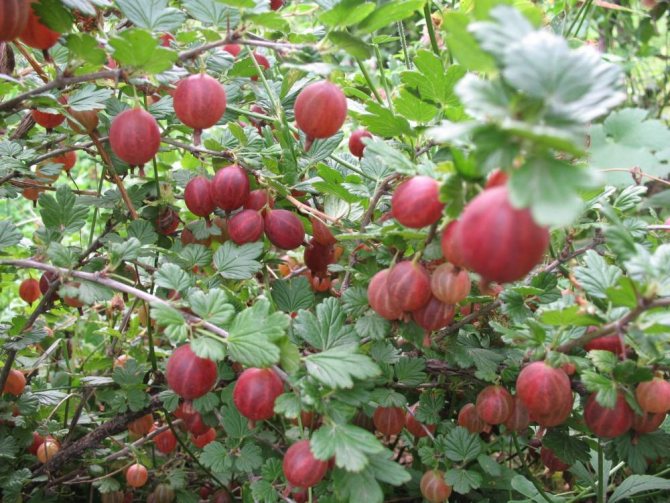

Benefits
Carrying out a gooseberry planting in the fall has advantages that will help the gardener to give preference to these particular dates. The main role is played by the fact that the bushes have already fully recovered after fruiting, were able to grow new strong shoots and green mass, which contributed to the proper nutrition of the root.
Main advantages planting gooseberries in autumn:
- Large selection of planting material, since by this time many nurseries and gardeners are selling gooseberry bushes of different varieties with an open root system, which allows you to choose the optimal type for your climatic zone. And it is also possible to visually inspect the root system and purchase a gooseberry seedling without any defects for planting in the fall.
- Minimal care for gooseberries after planting in the fall. When planting, if you prepare the planting hole in advance and water the seedling abundantly, otherwise no special care is required for the plant. Autumn rains will be able to provide the bush with a sufficient amount of moisture, and the low air temperature will not allow it to evaporate, which will contribute to the rooting and deepening of the root system into the soil.
- High survival rate. According to statistics, gooseberry seedlings planted in autumn have a high survival rate - about 85-92%. This is due to the fact that the plant does not need to spend energy during this period on the growth of shoots and leaves, so it directs all its energy to the development of the root. The lower air temperature also helps the seedling to adapt more quickly to a new place.
- Saving time. Planting gooseberries in the fall allows the gardener not to be sprayed, like in spring, on different types of work.In addition, it allows you to carefully plan the site that is optimal for the crop.
disadvantages
In addition to the benefits, there are disadvantages of autumn planting of gooseberriesWhat you need to know before performing the procedure:
- freezing probabilitywhen warm weather gives way to a sharp drop in temperature below 4 degrees, at which the root of the culture can no longer take root properly;
- the likelihood of damage by rodents, who in the autumn will not miss the opportunity to feast on the young bark of seedlings, therefore, you will need to use various traps and shelters from uninvited guests.
The disadvantages are much less than the advantages, so it is worth considering in advance and finding time to plant gooseberries in the fall, because by planting a 2-year-old seedling, you can get the first harvest of berries in the next season.
Important! Subject to the necessary conditions, a gooseberry bush in one place can fully grow for 40 years.
Timing recommendations
Spring and autumn are suitable for transplanting gooseberries. But a spring transplant is rarely chosen, since it is difficult to guess the exact time for planting.
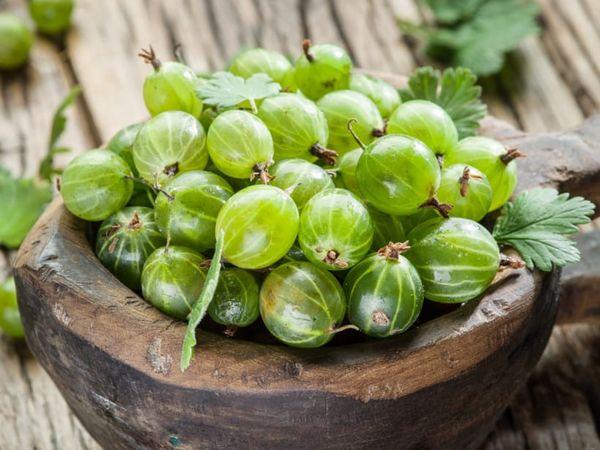

Spring
Gooseberry buds early. Therefore, in the spring it is difficult to seize the moment to transplant the bushes. The plant can freeze from sudden frosts at the end of March, insufficient heating and excessive soil moisture after the snow melts.
When transplanting after the beginning of the growing season, in April, the plant needs time to adapt. This will take away the strength needed for growth and fruiting. If the roots are damaged during transplantation, the bush will not receive enough nutrition for development and may die. If the autumn transplant had to be skipped due to early frosts, then the procedure is postponed to spring.
Fall
Favorable time for transplantation is September and October. After pruning, strong shoots will remain on the bushes. During the winter, the plants will strengthen their positions, and in the spring they will be ready for growing.
In autumn, plants adapt better to new conditions after transplanting, so at this time of the year it is good to transplant gooseberries for reproduction by layering and dividing the bush. A weakened plant will recover faster if transplanted in the fall.


Lunar calendar
Most amateur gardeners do not use the recommendations written in books, but the lunar calendars. In fact, this technique finds its place and is most often effective.
Even transplanting gooseberries in the spring to a new place according to the lunar calendar will allow you to protect it from pests and other misfortunes. The moon and the earth are two celestial bodies that are interconnected with each other, therefore, they have the maximum influence on us.
It is recommended to transplant seedlings to the growing moon, since at this time energy accumulates, affecting all living organisms. If planted on a waning moon, then in 90 percent of cases, any plant begins to suffer from pests, the roots do not take root and fruiting decreases significantly.
Study the lunar calendar at the time when you are going to transplant plants, this will save you time and labor costs.
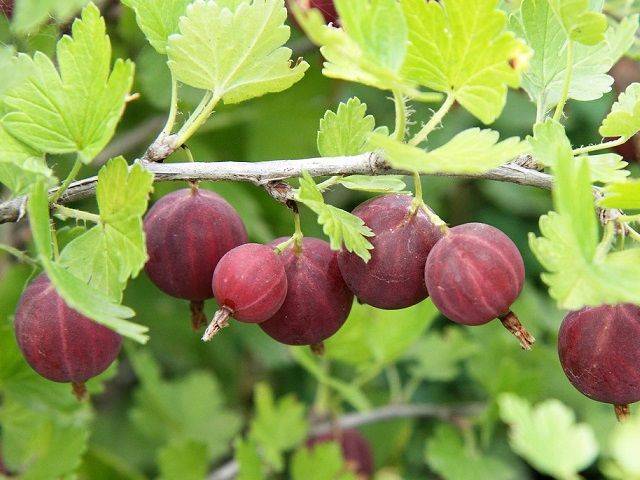

The Full Moon is the deadline for the transplant work. Already on the waning moon, you can not do anything if you do not want to lose your harvest. Of course, not many people believe this, but practice shows the opposite. Good results can be achieved only by doing everything in accordance with natural processes and cyclical changes.
Following all the rules and recommendations, it will be much easier to transplant gooseberries to a new place in the fall. The tips were presented by professional masters of their craft.
Subscribe to our channel in Yandex.Zen! Click "Subscribe to the channel" to read Ogorod-in the "Yandex" feed
Drop off location
The correct choice of a place for planting gooseberries is the main factor that determines the normal development of the bush, its fruiting and protection from diseases.
Illumination
The plant needs a lot of sunlight, so even semi-shaded areas are unsuitable for planting it. An area open to the sun all day, protected from drafts and gusts of the north wind, is the best place for gooseberries.
Note! If you plan to plant the bushes along the hedge or the wall of the building, the indent from them is made at least one and a half meters to ensure good ventilation of the bush and convenient picking of berries.
Best predecessors
It is best to plant gooseberry bushes in those areas where potatoes, beets, and legumes previously grew. As a rule, the soil after such crops (they are called tilled crops) remains loose, with a small amount of weeds, and after legumes, it is saturated with nitrogen. The worst predecessors are black or colored currants, raspberries. They not only greatly deplete the soil, these plants have common pests and diseases, so they even avoid their neighborhood.
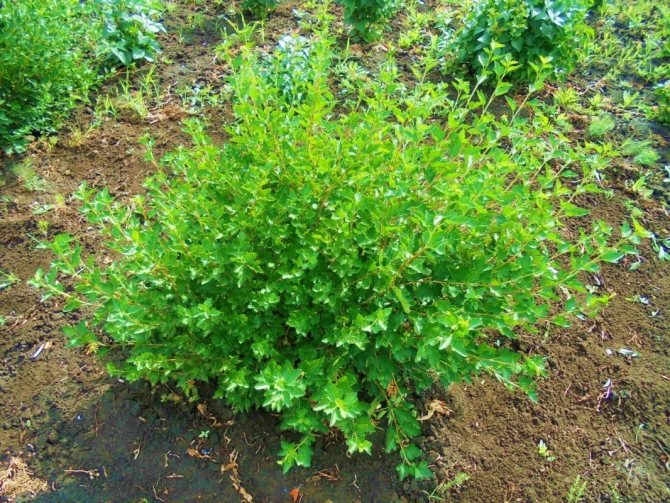

Photo: <>
Soil requirements
The best soil for gooseberries is considered fertile loamy, with an average density. If the soil of the summer cottage is different from the ideal, it is ennobled by adding baking powder or compactors. The plant loves neutral soil, and this factor completely determines the health of the bushes - in an acidic or alkaline environment, they immediately begin to hurt. If the pH of the soil in the area is far from neutral, corrective additives are added.
Important! The close location of groundwater, stagnant moisture after rains or melting snow is unacceptable, since gooseberries, including new varieties, have low immunity to fungal diseases.
Landing rules and step-by-step guide
Planting gooseberries is easy, it is important to fulfill several conditions:
- choose seedlings carefully;
- determine the correct landing site;
- prepare a pit;
- follow the procedure;
- before the onset of cold weather, provide the new bush with the necessary care.
Recommendations for choosing a place for a bush
The gooseberry is a light-loving shrub, so the place for it should be sunny. A deep shadow should not fall on it during the day, so the bush is not planted under the walls of buildings, tree crowns and near other tall shrubs, such as raspberries.
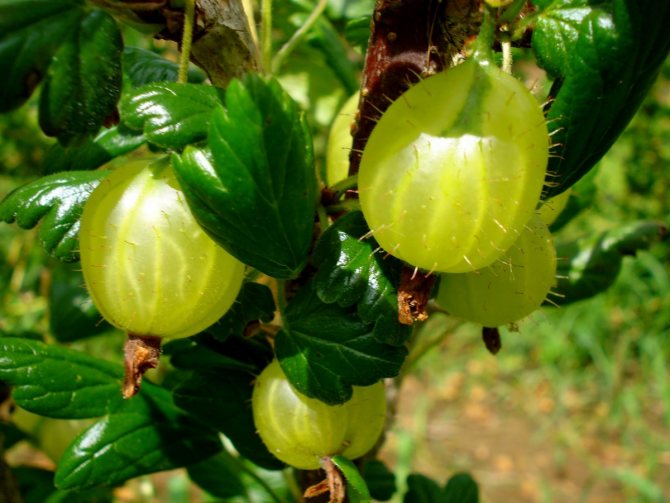

In an open and sunny place, gooseberry berries will be large and sweet.
It is undesirable to plant gooseberries with currants, not because they shade each other. They have common diseases and pests, and if one crop gets sick, then the other will suffer.
Gooseberries love neutral soils, loose and fertile. The ideal option is loam or sandy loam soil. Wet and heavy clay soil can be diluted with sand, and clay can be added to dry sandy soil. Such soil needs to be fertilized regularly, and then the gooseberry will bear fruit perfectly.
When choosing a site, consider how close the groundwater is to the surface in this place. The depth of their occurrence should not be less than a meter. If this condition is not taken into account, the roots of the bush will begin to rot, and as a result, it will die. When moisture stagnates in the area for gooseberry bushes, an elevated bed is made. Under them, soil is poured to a height of about 50 cm and a width of at least 80 cm.
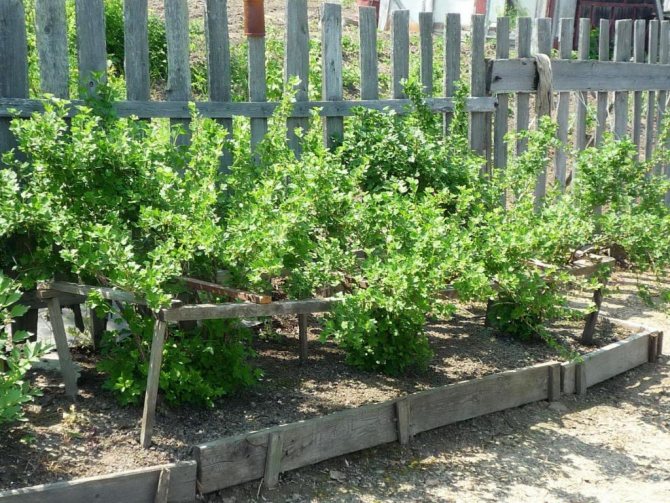

If the groundwater at the site is close, the gooseberry should be planted on a hill.
What arrangement of bushes is recommended
Gooseberry bushes grow strongly, so it is important to follow the planting scheme. The distance between the planting holes must be at least 2 m. If you are planting bushes along the fence, step back 1 m from it.
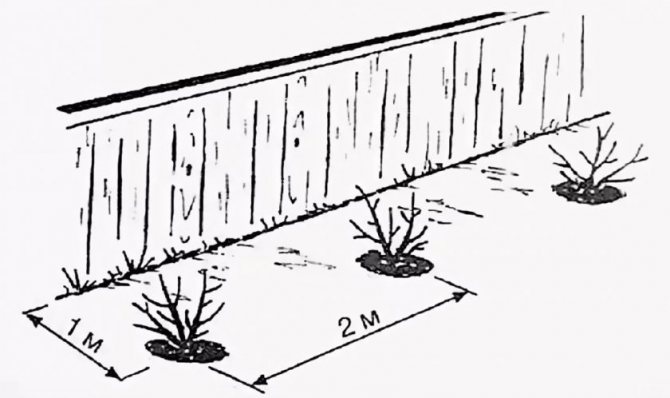

During planting, a distance should be maintained between the seedlings, otherwise the bushes will subsequently lack nutrition
We select seedlings
High-quality planting material is the key to success in obtaining good yields. What to look for if you are buying an open root system (ACS) seedling:
- the appearance of the bush - no signs of disease;
- the condition of the root system is well developed, clean, with roots at least 25–30 cm long;
- aerial shoots - 2-3, 25-30 cm long.
For planting, the best age for seedlings with ACS is two years.


When choosing gooseberry seedlings, pay maximum attention to the root system - it must be strong and healthy.
If you decide to buy bushes with a closed root system (ZKS), you will not be able to carefully examine the roots. In this case, pay attention to the aboveground part - it should be leafy, with shoots of at least 30-50 cm. A good indicator is that the seedling sits firmly in a pot or container.
Wiggle the branches, and you will immediately feel how tightly the roots are wrapped around the earthy ball. If a seedling dangles in the ground, it means that it has recently undergone a transplant. Such planting material should not be taken.
Seedlings with ZKS can be taken one or two years of age. After purchase and until planting, they are stored in a plastic bag with roots wrapped in a damp cloth. Before boarding, do the following:
- Examine the roots and trim off dried and damaged tissue.
- For better survival, before placing the seedling in the hole, dip the roots in a solution of a growth stimulant, such as Kornevin. When processing, follow the instruction class = "aligncenter" width = "1053 ″ height =" 813 ″ [/ img] Kornevin improves the survival rate of seedlings due to the rapid growth of the root system
- If there is no remedy, just bathe the roots in water.
Preparing the pit and planting a bush
For the gooseberry, you need a pit 50 × 50 cm in size and the same depth. If you bought a seedling from the ZKS, then just dig a hole about 2-3 times larger than the container in which the bush grows. Before planting, it must be filled with fertile soil. For this:
- Take the top fertile soil layer, mix it with 1 bucket of humus.
- Add about 100 g of superphosphate or 200-300 g of bone meal.
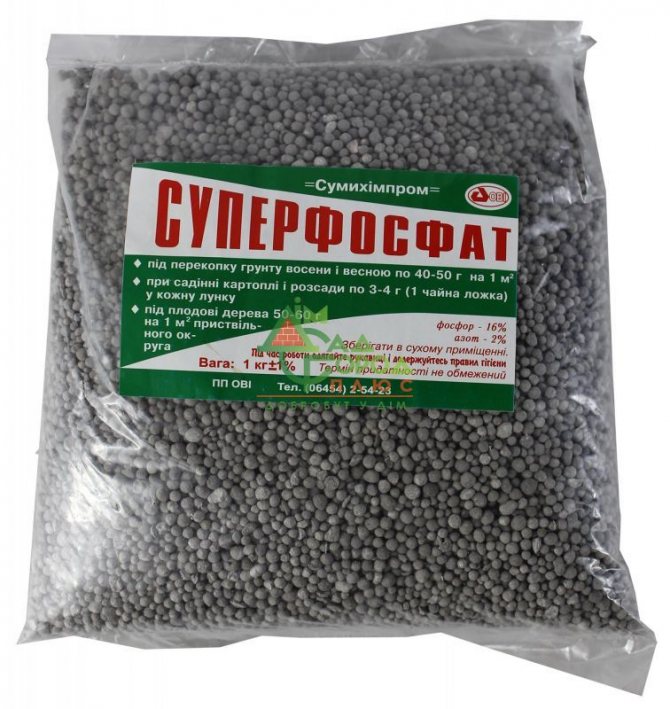

Due to the high content of phosphorus, superphosphate accelerates the fruiting of gooseberries - Pour 30-40 g of potassium sulfate or 300-400 g of ash into the mixture.
For the nutrient mixture to settle well in the pit, prepare it 2-3 weeks before planting.


While digging a hole, the upper nutrient layer of the soil must be thrown in one direction, and the lower, infertile, in the other, fertilizers are added to the upper layer
Disembarkation instructions
How to plant a gooseberry bush in the fall:
- Fill the hole halfway with the resulting nutrient mixture.
- If you have a seedling with ACS, build a small mound in the middle of the hole - it is easier to lay and spread the roots on it.
- Water the soil with water (this is an optional procedure, you can water the bush after planting).
- Place the prepared seedling on the top of the mound and carefully spread the roots, they should not bend upwards.
- Gradually fill the rest of the soil into the hole, periodically compacting the soil and shaking the seedling so that the soil is freely distributed between the roots and voids are not formed.
- Embed the root collar by 5–7 cm.
- Compact the earth around the bush, make a small earthen roller (5-10 cm) around the perimeter around the planting, and pour about a bucket of water into the near-stem hole.
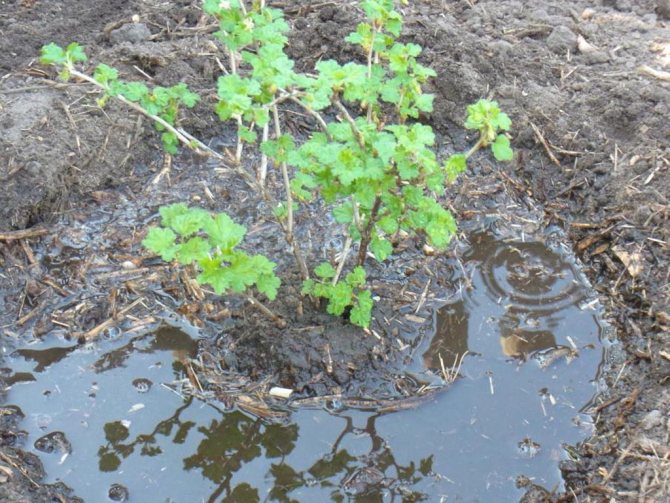

Pour water into the hole gradually, waiting until the previous portion is absorbed into the ground - And the last operation - cut the branches to a height of about 10 cm. Each of them should have 3-4 living buds.
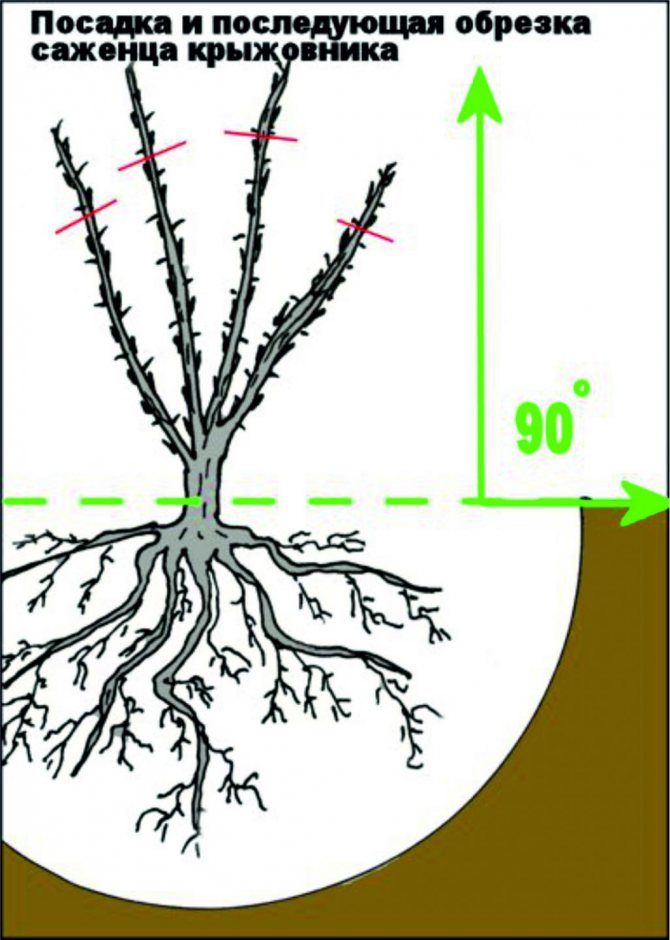

After planting, you need to cut the gooseberry branches to 10 cm
To protect the roots from cold weather, drying out and bulging, the ground around the seedling is mulched with a thick (up to 8 cm) layer of humus, peat, fallen leaves or sawdust.
How to plant gooseberries with cuttings
If you want to propagate existing bushes, you can do this in autumn by cuttings, although this method is considered not very productive and is not suitable for all varieties of gooseberries. For reproduction, cuttings are taken from new green basal shoots of the current season, preferably from the top of the branch. A garden bed is prepared for planting and fertilized in the same way as for seedlings. Procedure:
- A part of a branch 15–20 cm long is cut off so that there are 4–5 buds on it.
- The tips are soaked in a solution of Kornevin or Heteroauxin.
- The shoots are stuck into the ground at an angle of 45 ° to the surface. This will provide better root growth and survival. No more than two buds are left above the surface.
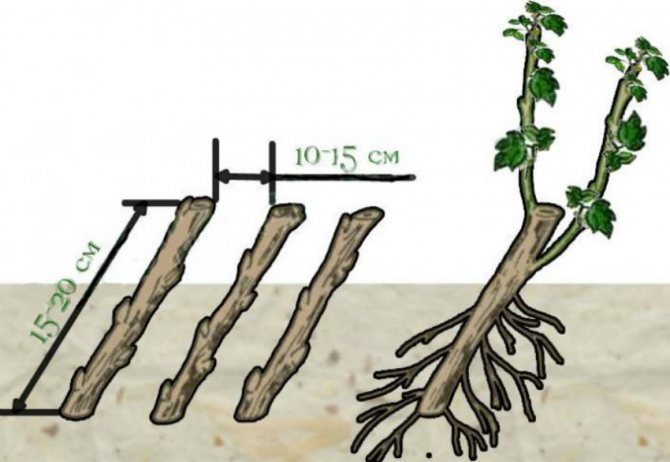

Gooseberry cuttings are planted at a distance of 10-15 cm from each other - After planting, the garden is watered, the ground is trampled down and mulched.
In this season, cuttings will not require special care; in dry autumn they just need to be watered.
If you plant gooseberries in this way, choose a place for the garden where there is a lot of snow in winter - this will help future seedlings to survive the cold.
What to remember
Landing can sometimes fail. Here are the most common mistakes inexperienced gardeners make when planting gooseberries:
- poor quality seedlings were purchased;
- the planting dates are violated: too early the planted bushes begin to vegetate, which they do not need at all before winter, and late planting threatens the seedlings with freezing;
- the proportions are not observed when charging the soil with fertilizers;
- the roots are damaged during planting. The break point is the gateway for infection;
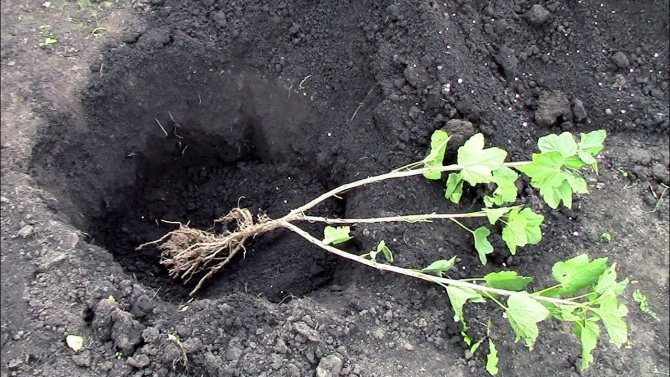

When planting, it is important not to damage the gooseberry roots so as not to infect - the place was chosen incorrectly, and the gooseberries simply do not have enough light;
- the bushes are planted too close to each other.
And don't neglect post-plant care. Drying out plants simply cannot take root, which means that the plant will die.
Gooseberry transplant to an adult bush. How to prepare and dig up a bush
The step-by-step process of preparing a gooseberry bush for transplantation is as follows:
- Pruning is carried out by removing old and unpromising branches. Leave 6-8 healthy shoots. They are also cut by about a third.
- Note! Root shoots are chopped off, since it will take away the strength required for full rooting.
- They dig in the bush around the circumference, stepping back from the center by 30-35 cm.
- Thick roots that go beyond the boundaries of the circle are chopped off.
- With a shovel, a pitchfork, in difficult cases with the help of a scrap, the bush is removed from the ground, laid on a piece of tarpaulin or a plywood sheet.
- Transfer the bush to a new place.
Traditionally, an autumn transplant of an adult gooseberry is combined with the division of an overgrown plant into several new bushes. For this, the mother plant must be completely freed from the earth and divided into parts so that each has a main and adventitious roots.
Transshipment (with the preservation of the earthen coma) transplanted young, not very overgrown bushes. Only healthy shrubs are passed over, so as not to transfer pathogens to another place with the soil. If the transplant is caused by the need to change the place due to disease, the earth is completely removed, the roots are carefully examined and the rotten, dry, suspicious ones are cut out.
In order to plant a bush, a low earthen mound is poured at the bottom of the pit, a gooseberry is placed on it, the roots directed along the slopes. Then the pit is gradually filled with earth with the addition of compost, moderately ramming. The near-trunk circle is watered with water from a watering can with several methods, adding soil mixture as it subsides. You can deepen the root collar, but no more than 2 cm.
Follow-up care
For growth and fruiting, established bushes need nutrition, moisture and pruning.
Mulching
Mulch will retain moisture, protect against weeds and parasites. A layer 10-15 centimeters thick allows water to pass through, but retains light. In such conditions, weeds hardly disturb the gooseberries. Dandelions and wheatgrass grow without mulch, they weaken the plant.
For coating use:
- dry peat crumbs;
- crushed humus;
- sawdust;
- bark;
- chips.
Coniferous sawdust increases the acidity of the soil, so gooseberries are mulched with sawdust from deciduous trees. For the winter, the trunk circle is covered with dried grass, hay, leaves.
Watering
The gooseberry has a well-developed root system.The plant is sick from excess moisture. A gooseberry bush transplanted in spring, in June, has enough moderate watering 2 times a week in the absence of rain. In July, watered once every 2 weeks. In the heat, sprinkling is carried out - spraying the leaves with water. Watering should be done in the morning or evening.
In autumn, the final watering is carried out at a temperature of 8 degrees Celsius. 50 liters of water are poured under the bush. Abundant moisture will protect the soil from freezing.
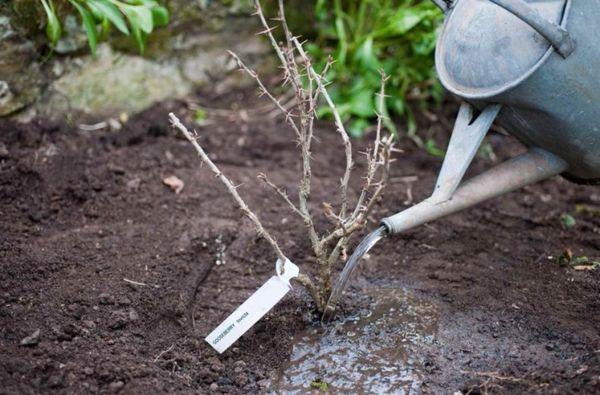

Top dressing
Gooseberries take root in spring in 20-30 days. 2 weeks after the buds bloom on the transplanted bush, nitrogen fertilizer is applied. It promotes crown growth. An organic source of nitrogen is chicken manure. 10 liters of his infusion is poured under a bush. The mulch is pre-removed.
Liquid organic and inorganic fertilizers are absorbed faster. Before applying top dressing, the gooseberries need to be watered, and then evenly distribute the nutrient substrate or infusion along the near-stem circle. You can also use microflora fertilizers. But they are not compatible with mineral substrates, as minerals destroy microorganisms.
At the end of June, you can feed the gooseberries with potassium. The substance retains moisture, and plants will better tolerate heat.
Compost and organic matter are introduced in autumn. Phosphate-potassium fertilizers strengthen the roots. After the autumn transplant, the first spring fertilizers are applied when the buds bloom. The bushes are fed with urea, after loosening the ground under them.
Pruning
Branches damaged during transportation of the bush must be cut off after planting. Broken shoots will not grow together.
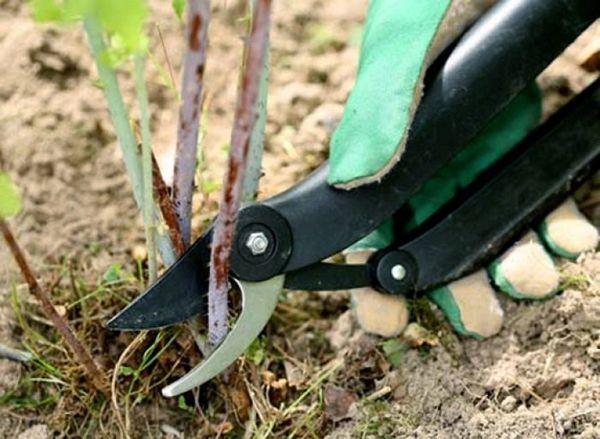

If an old shrub is transplanted for rejuvenation, it must be pruned every year. Before wintering, old branches are removed, leaving 6-8 young shoots.
Recommendations
Care in the fall consists in watering the seedling before the onset of cold weather. Watering should be done after removing the mulch layer. For easier wintering in regions with a mild climate and not very harsh winters, after the last autumn watering, it is advisable to cover the soil under the bush with sawdust or dried lawn grass. You don't need to cover the top of the bush. If the gooseberry is grown in a region with a rather harsh climate, then after the snow falls, it is advisable to cover the bushes with it before the onset of severe frosts. If there is no snow for a long time, then it is advisable to cover the plant with durable material.
In the spring, when the buds begin to bloom on the bush, it is necessary to loosen the soil under it and fertilize the plant with urea. A little later, you should feed the gooseberries with phosphorus and potassium-containing fertilizers to prevent leaf burns.
For seedlings that were transplanted in the spring, care is more laborious. It is imperative to mulch the soil during the rehabilitation period with the help of burnt manure, bark and wood chips. FROM A 15 cm thick layer of mulch permeates water perfectly, protects gooseberries from excessive evaporation and weeds.
If some gooseberry shoots were damaged during transplanting, then they must be removed so that they do not take nutritious juices from intact branches. 3-4 weeks after moving, the gooseberry should take root. An indicator of this is the blossoming buds.
Further care is the same, regardless of the time of the gooseberry transplant:
- 1. In 14 days, after the leaves appear, it is desirable to make the first feeding with nitrogen-containing fertilizers to stimulate the development of young twigs and leaves.
- 2. In the spring, it is necessary to reinforce the feeding of the plants weakened during transplantation.
- 3. When using nitrogen fertilizers, it must be remembered that a larger amount is needed, since they have increased solubility and are washed out of the soil much faster.
- 4. It is better to use poultry manure from organic nitrogen-containing fertilizers. But in order to avoid the death or burn of the gooseberry, it must be diluted in water a week before use.
- five.It is more convenient to fertilize gooseberries with liquid agents, evenly pouring them over the ground of the trunk circle. Before making them, it is necessary to water the bush well.
We transplant the gooseberries. When and how to transplant gooseberries correctly?


The presence of fruits and berries in the garden makes it possible to continuously replenish the amount of useful vitamins and minerals in the body. The more crop options that grow on the site, the better, but it is important not to forget about planting gooseberries. This plant has a lot of useful properties, therefore it is rather difficult to imagine a garden without it. In order for the number of bushes to be sufficient, you need to know how to transplant them correctly, and when to do it.
Features of seasonal transplants
From time to time, you have to transplant gooseberries to another place due to a number of reasons, among which may be:
- the wrong choice of the place where the bush is currently growing;
- the need to occupy the territory with gooseberries for other needs;
- overgrown bushes.
The process of transplanting gooseberries to a new place can be carried out in spring or autumn. Choosing a particular option has both advantages and disadvantages. As for the summer, at this time it is possible to reproduce the bush by dropping its branches, which will become autonomous by autumn.
In order for the transplanted bush to begin, it is important not only to carry out the procedure at the right time, but also to prepare everything for this. The soil in which the culture will grow is very important; in the wrong land it will be difficult for any plant to develop. The next factor that should be taken into account in the process of work is the illumination of the sun. If the lighting is weak, then the gooseberry will not be able to fully grow and develop, and therefore bear fruit.
The procedure for transplanting and caring for bushes in spring and autumn will be radically different. First of all, this is due to the fact that the autumn option involves the preparation of a place, a hole and planting a bush with a little watering, which makes it possible for the root system to take root and settle in a new place, after which the work ends, and the bush remains for the winter. As for the spring work, then much more effort is needed here, because in addition to preparing the pit and planting, you need to fertilize the bush, spray it, cut it off, water it correctly, and carry out all these actions throughout the spring.
In order to more clearly understand what the differences are between transplanting gooseberries in autumn and spring, as well as the front of work with it in the summer, it is worth considering them in more detail. Complete information will enable the gardener to choose the right transplant time that is right for him, based on climate conditions, gooseberry varieties and personal beliefs.
- Spring
Spring is the time of the awakening of nature, including in the summer cottage, because the gardener needs to prepare well for the winter period, read various articles on the culture of interest to him in order to know exactly what to do in the garden with the arrival of heat. Regarding gooseberries, experienced gardeners consider spring time less suitable for plant transplant work, noting some of the disadvantages of this procedure.
- Difficulties in choosing the right date for transplanting, because this culture tends to wake up quickly after winter. In order for the bush to grow well and produce a crop, it is important to start work before the sap flow process.
- In the spring, the leaves are actively growing, and then the roots, therefore, during the development of the top of the bush, the bottom may not take root, which will cause problems in the further development of the plant.
In the case of planting gooseberries in the spring, the process of adaptation to new conditions is much slower, and there is no need to talk about the harvest. Another problem can be called the selection of seedlings, if you do not have your own, because most of the material has remained from the fall and it is difficult to determine its condition.The pluses of a spring transplant include the ability to choose a garden bed and form a vegetable garden so that all crops grow near favorable neighbors.
- Summer
The process of transplanting gooseberries in the summer is not carried out, since this time is allotted for the growth, development and fruiting of the bush. The only activity that can be done at this time of the year is breeding new bushes. In summer, it is possible to get more seedlings thanks to green cuttings and arcuate cuttings. Both options make it possible to grow a new bush, which will get stronger by the fall and will have its own, independent root system.
Preparing gooseberries for winter in autumn
Actually, caring for gooseberries in the fall has one single purpose - to prepare the shrub for winter. And if you have done pruning, weeding, digging, winter watering, top dressing, made a soil cushion, laid mulch and treated the bushes and the ground under them from pests and diseases, your gooseberry is ready for wintering. It remains only, when the snow falls, to throw it under the bushes, but if there is no snow yet, and the frosts are intensifying, cover the bushes with dense covering material, for example, agrospan.
When do you need to transplant gooseberries
The reasons why it became necessary to transplant adult gooseberry bushes can be very diverse. Sometimes choosing the right place does not work right away, gardeners do not always take into account the future size of an adult shrub when planting. As a result of the struggle for nutrients and territory, gooseberries either begin to suppress their neighbors, or neighboring plants begin to negatively affect its development and fruiting.
Another significant reason, in the presence of which the transplantation of a shrub is often simply necessary, is its defeat by various diseases that develop due to location in inappropriate conditions. Sometimes, replanting is the only way to save a plant that is dying before our eyes. So, for example, when placed in lowlands, gooseberries become easily vulnerable to fungal infections.
Transplant rules
The transplant process itself will not take much time, but first you need to carry out all the preparatory work.
It is recommended to dig the planting holes 1–2 weeks before transplanting, then the soil will have time to settle, and the fertilizers will interact with the ground. The depth of the fossa should be at least 50 cm, the width depends on the size of the rhizome. On the eve of planting, the planting pits are well moistened, pouring 3-4 buckets of water into each.
The transplant process itself consists of the following stages:
- The cut bush is dug in within a radius of 35–40 cm, trying not to damage the main roots - small lateral roots can be chopped off with a shovel.
- Further, using a shovel and a crowbar, you need to try to remove the bush from the ground, lay it on a piece of film and move it to the planting site.
- Too bulky lateral roots can be cut off with a shovel or ax. Do not worry about harming the plant - the gooseberry is very tenacious, and its root system quickly recovers.
- Next, we lower the bush into the planting hole so that it is buried about 5 cm lower than before, in the old place.
- We straighten the roots, and cover it with earth, compacting and pouring water over each layer so that voids do not form.
- After planting, the trunk circle is mulched with organic matter, best of all with peat chips.
When transplanting gooseberry bushes, it is necessary to immediately dig the required number of planting holes, adhering to the scheme: 1.5x1.5 m.This is the most acceptable distance between plants and in the aisles for any gooseberry variety, taking into account regular planned pruning. The gooseberry has a very high survival rate, therefore, having transplanted it in the fall, you can count on a good harvest next spring.
Popular mistakes when planting gooseberries in autumn
Novice gardeners who are poorly aware of the features of a shrub often make mistakes when planting it. In order not to step on the same rake, it is better to familiarize yourself with typical misconceptions in advance and protect the gooseberry from its own bad influence, excluding the following most likely mistakes:
- Initially purchased poor quality seedling.
- Are selected wrong landing dates - either too early (the seedling may have time to start growing), or too late (the root will not have time to develop enough and the seedling will die due to its freezing).
- Picked up too shaded place.
- Ignored the need making a sufficient amount of nutrient soil and fertilizers into the landing pits.
- Bushes are planted too close to each other... Strong thickened plantings poorly blown, which makes the plants start to hurt. Or, as a result of a lack of sunlight and nutrients, too small berries are tied.
- After landing no trimming.
- Not produced due post-plant care, namely, sufficient humidity is not maintained.
Well, let your gooseberry be as tasty as thorny (although thornless varieties are gaining popularity now)!
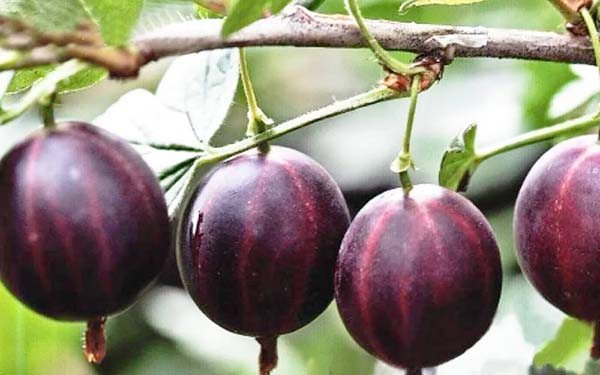

Thus, now you know how to properly plant gooseberries in the fall at your summer cottage. It's not that hard, is it? All that is required of you is to follow these instructions carefully and everything will definitely work out!
Video: how to plant gooseberries in the fall - planting and care features
Why transplant
Gooseberry transplant can be done in spring or autumn. Spring replanting is less desirable because:
- the plant "wakes up" very quickly after winter dormancy, in this regard, it is difficult to find the optimal time for the procedure, because the procedure must be carried out before the start of sap flow;
- during the period of bud formation, it is undesirable to injure the roots of the gooseberry, since the main forces of the plant are aimed at developing the upper part, and not strengthening the underground.
As a result, the transplanted bush adapts slowly, develops poorly, and the quality of the crop falls.
It is better to give preference to the autumn procedure, because:
- the bush has already completed fruiting, so all forces will be directed precisely to strengthening the root system, and not the development of the upper part;
- he gradually passes into a stage of rest, so he can easily adapt to new conditions;
- replanting gooseberries in the fall is much easier than in the spring.
It is better to replant the gooseberry bushes in the fall after the foliage has fallen off. The optimal timing for transplanting a culture to a new place is September-early October. A month and a half is quite enough for the bush to strengthen before the onset of frost.
There are two ways to transplant a gooseberry bush: together with an earthen clod or a seedling.
Before planting, all old and excess shoots are cut out from an adult gooseberry. As a result, no more than 7 of the youngest and healthiest branches should remain. They are shortened by 1/3.
Now you can dig out the bush. For this:
- dig it around in a circle at a distance of about 30 cm;
- chop through thick roots extending further;
- carefully remove the bush from the ground with a shovel and lay it on a film so that it can be transferred to a new place.
When transplanting a large gooseberry bush, the diameter of the part to be dug is determined by the size of the crown and taken out very carefully so as not to damage the numerous roots.
Further actions are carried out in stages:
- Pit preparation. It is dug about half a meter deep and slightly exceeds the diameter of the bush. Several buckets of water are poured into it.
- Installation of a bush.
- Filling the voids with a mixture of earth and compost.
- Compaction of the soil.
- Abundant watering of shrubs fixed in the ground.
- Backfilling with dry soil and mulching.
If a massive gooseberry transplant is planned, then it is important to consider the following:
- the site for planting is prepared in advance, holes can be dug just before disembarkation, but it is better to outline their place in advance;
- shrubs are planted at a distance of 1.5-2 m;
- 1.3-1.5 m are left between the rows.
- the bushes are transplanted one at a time into separate holes;
- if the diameter of the dug hole is small, then it is increased.
Using the transshipment method, you can transplant a small plant at any time (except for winter, of course). Only you need to dig in a section slightly exceeding the size of the crown, so that when digging up, damage the root system as little as possible. Further - according to the general scheme. In August, very small gooseberry shoots can be transplanted in a similar way.
Planting a seedling
The main difference between the seedling is the root system cleared of soil. That is why they cannot be stored for too long, and they adapt to new conditions for a long time, because their roots were injured during excavation and cleaning. For the spring planting of gooseberries, this option is definitely not suitable, since the roots will not have time to adapt before the start of sap flow.
For planting, take a young bush (no older than two years), on which there are at least three main roots about 15 cm long. The adventitious roots must also be developed. The aerial part consists of two shoots about 40 cm long, freed from leaves.
Preparing a gooseberry seedling for transplanting consists in removing unhealthy roots and stimulating the entire root system in a specially prepared talker (1 kg of clay and black soil, a bag of Kornevin and 6 g of Aktara are taken for 3 liters of water.)
Transplanting gooseberries in the fall to a new place with seedlings is similar to the previous method:
- Prepare the pit.
- A small mound of earth is poured into it.
- A seedling is installed on it vertically or slightly at an angle so that the root collar is deepened by 7-10 cm.
- Holding the trunk, they cover the soil, periodically compact it. At the same time, the bush is shaken a little so that the earth fills all the internal voids.
- Spill and mulch, cut the twigs to the lower bud.
- For the winter, the seedlings are covered with sawdust.
Caring for gooseberries after transplanting consists in timely watering. Before the procedure, the mulch is removed, and after moistening, it is returned under the bush. You do not need to cover the gooseberries for the winter. It is enough just to insulate with sawdust.
First of all, in August you need to prepare a new seat. It is dug to a depth of approximately 45–55 cm, the diameter should be 6–8 centimeters larger than the previous one. After the pit is ready, 3-5 buckets of water are poured into it, depending on the resulting size, and filled in layers. The first 5-centimeter layer is drainage, for this they use broken brick, crushed stone or gravel.
After the completion of the work related to the organization of the planting site, the stage of plant preparation begins. The shrub must be dug on all sides within a radius of 35–45 centimeters from the base. The largest roots, which go beyond the formed trench, can be carefully chopped off with the help of a sharpened working surface of a bayonet shovel.
The gooseberries are cut and removed from the ground using a shovel or garden pitchfork. For further transportation, it is placed on a flat sheet of plywood or in a garden cart so as not to damage the root shoots during movement.
Upon arrival at the site, the bush is carefully placed in a hole, deepening a few centimeters below the level at which it grew before transplanting, and covered with soil mixture. When the pit is completely filled with earth, the plant is watered, and after the soil has settled, the missing part of the earth is added. The bush is mulched with peat - this will help keep warm and retain moisture. When watering, the mulch layer is pushed back.
In the spring, when the first leaves on the bush bloom, it is recommended to feed the gooseberry with urea, potash and phosphorus fertilizers - all this is introduced into the soil during its seasonal loosening.In summer, you can add some nitrogenous substances to stimulate branching and thickening of the crown.
Autumn transplantation of fruit shrubs guarantees excellent plant survival in a new growing place, and therefore gardeners can easily resort to propagation of gooseberries by dividing the bush.
In this video, you will learn how to properly transplant a gooseberry.
Often, a transplant is needed exclusively for decorative purposes, for example, if you have come up with a spectacular flower bed, and it just fits the place that the gooseberry takes. Sometimes it happens that even if all the rules of planting and care are followed, the gooseberry does not want to bring a crop to any, it only takes up space. In this case, transplanting to a new place is exactly what can give a second life to a bush.
The plant tolerates this procedure well, especially if it is done correctly in the fall, when vegetative processes slow down.
Where to plant
Each gardener chooses a place himself, according to the layout of his site. However, be sure to consider that the gooseberry loves the sun. In dense shade, it will not give rich harvests. In addition, if the plant is planted in a shaded, damp corner of the garden, it will be susceptible to various fungal diseases. Powdery mildew is especially common on gooseberries, which is sometimes quite difficult to cope with.
Another important condition when choosing a place for a plant is the presence of groundwater. They should not be closer than 2 meters from the ground.
The condition of the soil also needs to be considered. Gooseberry is an unpretentious plant. But it also does not bear fruit if it grows in an unsuitable soil for it. The soil must be fertile.
Consider the fact that it is advisable not to plant gooseberries near raspberries or currants, since these crops are prone to the same diseases.
Paralympian Talay without arms and legs: "the harder the fight, the more significant the victory"
Only on the soft spot: Russian Domostroy forbade children to be punished otherwise
Sometimes we wear a bra the wrong way: ways that are harmful to health
Features of transplanting gooseberries at different times of the year
There is no significant difference in the technology of spring and autumn gooseberry transplantation. A pit for an autumn transplant is prepared 2-3 weeks before it, and for a spring one - from autumn. Nuances may appear during subsequent care, and they depend on the current weather.
Autumn gooseberry transplant
With an autumn transplant, as a rule, frequent watering is not required until the onset of winter, since most often it rains in October-November and there is no heat. A thick layer of mulch (up to 10 cm), which is required after transplanting, successfully retains irrigation water, therefore repeated frequent watering is required only in case of dry weather. In normal weather, it may be sufficient to repeat the watering one week after transplanting.
Top dressing during the autumn transplant is not required, it is carried out already next year. For the first time, until spring, cover the soil under the bush with a piece of roofing material: it prevents the evaporation of water and warms the earth. But if it is a dry autumn, the roofing material must be periodically raised, the soil moisture checked and, if necessary, irrigated.
Video: transplanting gooseberries in the fall
Spring gooseberry transplant
During spring transplantation, soil mulching is also carried out, but not in such a thick layer, otherwise the deepening of the root collar will be excessive. Watering is carried out often, since the snow water in the soil runs out very quickly. After the leaves bloom, the bush is watered weekly, and after 2-3 weeks after that it can already be fed with nitrogen fertilizer (urea, mullein or chicken droppings).


In spring, gooseberries can be fed with nitrogen fertilizers, such as urea.

